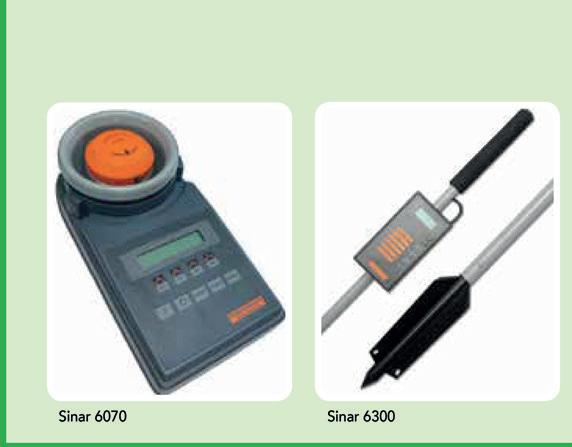




Serving the farming industry across East Anglia for over 40 years






Professional Services: New skills to harness latest farm technology
News
Bluetongue case reignites virus concern
Arable
Border delays pose threat to crop trials
Crop Establishment
Reminder to check 'over-wintered' seed
Water
Flooding tops agenda as winter approaches
Livestock
How catch crops combat forage shortfall
Fen Tiger
Tough decision to crop or not?





EDITORIAL
Editor:
Johann Tasker | T: 07967 634971
E: johann@ruralcity.co.uk
Design:
Mark Shreeve | T: 01502 725839
E: mark.shreeve@micropress.co.uk
Advertisement production:
Polly Coleman | T: 01502 725841
E: polly.coleman@micropress.co.uk
Callum Hoff man | T: 01502 725840
E: callum.hoff man@micropress.co.uk
ADVERTISING SALES
Danny Lewis | T: 01502 725862
E: danny.lewis@micropress.co.uk
Dennis Morales | T: 01502 725854
E: dennis.morales@micropress.co.uk
Harvey Taylor | T: 01502 725804
E: harvey.taylor@micropress.co.uk
Anglia Farmer is a controlled circulation magazine published monthly for farmers and growers in the eastern counties. To be included on the circulation list, a farmer must have a minimum of 70 acres of land, or 50 dairy/beef stock, or 50 breeding sows/250 growing stock, or 15,000 laying hens/broiler chickens. Intensive horticulture units are required to have a minimum of two hectares. Subscription is £18 a year (including postage). No responsibility can be accepted by the publishers for the opinions expressed by contributors.
If you no longer wish to receive this magazine, please email gemma.mathers@micropress.co.uk
© Countrywide Publications 2024
Published by Countrywide Publications, Fountain Way, Reydon Business Park, Reydon Suffolk IP18 6DH T: 01502 725800
Printed by Micropress Ltd, Suffolk. T: 01502 725800




Shutting the doors on the grain store after harvest is a good time to reflect on the season just finished – even if these days the next one has already started.
The past year has been a challenge from start to finish – mostly due to some of the wettest weather many of us can remember. Crops drilled and then redrilled and fields left fallow meant any harvest at all was at times almost unthinkable.
Harvest this year won’t be much to write home about – at least on many farms. Yields, as always, are variable. Disappointing for some but pleasantly surprising for others. Given the circumstances, at least.
And we are here, despite it all. And even in an age of over-wintered fallows, when there is rarely time to catch our breathe between harvest and autumn cultivations – we deserve to pause for thought before going again.
Autumn is time to look forward as well as back. It is also time to put things right – or at least begin the long process of doing so. Soil structure will need repairing, nutrients will need to be replen-

ished. Drainage too – if investment is available. For many, there are finances to sort out too. Crops just harvested were grown using inputs purchased at the top of the market. And the Basic Payment is now worth half what it was just a few short years ago.
To help us make sense of it all – and identify potential new sources of farm income, we have teamed up with regional accountants Larking Gowen, who are hosting the Autumn Farming Conference in partnership with the CLA.
Taking place in Bury St Edmunds on 5 November, the conference will highlight the need for flexibility as the new season beckons. Expert speakers and advisers will be on hand to help steer a path ahead.
Full details about the conference are available on pages 5 and 6 of this issue of Anglia Farmer magazine. We hope to see you there. It promises to be a time to reflect – as well as time to plan for a better future.
Johann Tasker, Editor









• Notifiable disease to be reported
• Take swift action
where necessary
• Remain on lookout for symptoms
Abluetongue outbreak on a Norfolk farm has reignited concern about the virus – and the need to keep vigilant for the disease.
Veterinary experts and industry leaders had warned it was only a matter of time before bluetongue was confirmed in the UK this year – likely to be carried over from continental Europe by midges during warmer summer weather.
Case details
Bluetongue serotype 3 (BTV-3) was confirmed in a single sheep on a mixed farm near Haddiscoe, 16 miles southeast of Norwich. A 20 km Temporary Control Zone (TCZ) was declared around the Norfolk farm on Sunday, 26 August.
Bluetongue virus symptoms range from mild to serious – including ulcers, productivity losses and death. Restrictions have been imposed on cattle, sheep and other ruminants and their germinal products moving in and out of the control zone.
Earlier this year, the NFU prepared a guide to help farmers prepare for bluetongue on farm. Farmers should be aware when buying livestock, take action if suspecting bluetongue in their animals and always remain vigilant, it said.
After an increase in confirmed BTV-3
cases in the Netherlands, Germany and Belgium with some animals showing se vere clinical signs, UK chief veterinary officer Christine Middlemiss has also urged farmers to stay on their guard.
Free testing is now available for live stock moving from the UK high-risk counties to be kept elsewhere in Great Britain or to be sold at a market with in a high-risk county where there will be buyers from outside the high-risk counties.
Ms Middlemiss said: “If you intend to move animals to live out of highrisk counties please take advantage of this free testing as it will help stop the movement of undetected disease.”
No licensed bluetongue vaccine is yet available in the UK.
National Sheep Association chief executive Phil Stocker said: “We are encouraging the Government in their engagement with vaccine manufactur-

mal and Plant Health Agency on 03000 200 301.
Farm leaders have ramped up calls on the government to increase its budget for farming – arguing that doing so is vital to maintain UK food security.
NFU president Tom Bradshaw made the call on 13 August – the day each year that the UK would run out of food if people could only consume food and drink produced by British growers and livestock farmers.
The UK is 62% self-sufficient in food. While this reflects similar levels of the past decade, some sectors have seen a recent decline. Self-sufficiency in fresh vegetables is only 53% – its lowest since records began in 1988.
Mr Bradshaw welcomed the government’s recognition that food security is critical to national


security. But he believes Defra’s annual £2.4bn farm budget must be more than doubled to prevent self-sufficiency from falling from its present level.
The government is expected to announce its budget for farming in next month’s Autumn Statement. Any increased multi-year agricultural budget must include statutory commitment to ensure self-sufficiency does not fall, said Mr Bradshaw.
“On this Self-sufficiency Day, we want to highlight the importance of boosting Britain’s ability to produce its own food so families across the country continue to have access to healthy, balanced and affordable meals – something we all have a right to,” he said. Scan the QR code to book your place Tuesday 5 November 2024















• How to recover from tough season
• Flexible approach best way forward
• Focus on long term, not short term
Farm businesses willing to adopt a flexible approach are more likely to recover quickly an extremely challenging season.
Growers and livestock producers who maintain a high degree of flexibility – rather than throwing good money at a bad position – have a better chance of thriving, says Bruce Masson, partner at regional accountants Larking Gowen.
Options for farmers looking to put their businesses on a sure footing will top the agenda at this year’s Autumn Farming Conference – taking place on 5 November at the All Saints Hotel, Bury St Edmunds (see panel).
Held in association with Anglia Farmer magazine, the conference is being hosted in partnership with the Country Land and Business Association (CLA) – with the Alan Boswell Group as headline sponsor.
Phasing out the Basic Payment Scheme has understandably seen a surge in interest in agri-environment initiatives – such as the Sustainable Farming Incentive (SFI) – as farmers seek to recoup valuable lost income, says Mr Masson.
“Farm businesses are starting to really feel the effects of the BPS. Payments are now half what they were just two or three years
ago – but it is still better to take a planned approach than rush into something that might not be in your best interests.”
Farmers should look before they leap and consider all their options before signing up to the SFI, says Mr Masson. While the SFI can be right for some farmers, it isn’t always right for others, he suggests.
“For some, it feels like a short term fix to a long term problem.”
Taking a considered approach can be easier said than done – especially for farmers at the sharp end of a disastrous season which left waterlogged fields uncropped, unproductive and ultimately unprofitable.
One answer could be starting a new business. But diversification isn’t for everyone. And neither is it always possible. Farms may not have the right infrastructure or access to investment. Neither might they be in the right location.
“It's all very well to suggest someone should start renting out a holiday let or commercial buildings. But it can be very difficult to supplement a dwindling income stream with something you have to magic out of thin air.”
The Autumn Farming Conference will address all these issues and more. “Farms are very individual businesses – each different to the next,” says Mr Masson. “And that means what is right for your neighbour might not be right for you.”

To help farmers and landowners explore the most appropriate options, experts on hand at the Autumn Farming Conference will include solicitors, land agents and other rural professionals – as well as Larking Gowen accountants.


Farming outlook
Speakers will include Edward Vipond from Troston Farms. He will talk the way technology can help ensure food production and the environment can go hand in hand while generating a revenue for the overall farm business.
“Commodity prices have been extremely volatile over recent years – not only in terms of farm inputs but in terms of output too,” says Mr Masson.
“That makes it really important to plan for the season ahead. You need to build in flexibility – and take into account the likelihood that production costs might change. It’s always better to plan for the worst but hope for the best.”

In partnership with the




Where: All Saints Hotel, Fornham St Genevieve, Bury St Edmunds, Suff olk, IP28 6JQ
When: Tuesday, 5 November 2024
The third annual Autumn Farming Conference will continue its tradition of spotlighting critical themes and topics relevant to the agricultural landscape.
This insightful event is aimed at everyone in the Farms and Rural Business sector – with a host of industry experts as speakers.
A full day of insightful sessions will shed light on key agricultural topics and provide practical advice – including the opportunity to ask speakers and experts questions.
Breakfast is included, and guests will be able to chat to exhibitors during the breaks. For full details and to book your place, visit larking-gowen.co.uk/AFC























• Seed imports face more inspections
• Oilseed rape trials affected by
• UK growers could be disadvantaged
Delays caused by changes to seed import rules threaten to un dermine the latest oilseed rape variety trials.
Brexit rules mean seed entering the UK since the end of April can now be regarded as high-risk – resulting in de lays and inspections at a border con trol points before it can move on to its destination.
This is especially problematic for new oilseed rape varieties coming from the EU because of the very narrow win dow for harvesting the crop, process ing the resultant seed, and moving it to be sown in official UK trials.
The trials are designed to test the seed for distinctness, uniformity, sta bility, and value for cultivation. The deadline for rape seed entered into of ficial trials to be on site for sowing this year was 10 August.
Year-long wait
But consignments of seed which were harvested and processed in EU coun tries were stopped and held at the bor der for officials to decide whether and how they should be inspected.
The trials are a key part of testing new crop varieties before they can be marketed to growers. If a variety misses the deadline, it could delay it reaching the market by a year, but it also jeopardises the wider operation of the trials.
With the deadline rapidly approach ing, the situation proved frustrating and potentially costly for plant breed ers already facing a number of addi tional bureaucratic barriers to innovation and crop development in the UK.
pressures. UK growers and supply chains stand to lose out if they face

British Society of Plant Breeders head of policy Anthony Hopkins said: “Oilseed rape is a crop under many

New oilseed rape varieties could be delayed by up to a year, say breeders
Anthony Hopkins: new border rules are posing a ‘logistical challenge’
can be added to the UK National List and marketed to British growers.
Seed imports arriving in Britain last month were held at the border for the first time since the new rules came into effect – leaving plant breeders with a logistical challenge and scrambling to work out how long the delays would be.
The border changes are also affecting a number of other arable and horticultural crops – including beans, maize, and tomatoes. Without action, breeders said growers of those crops would also continue to suffer.
The BSPB has been calling for Defra to change the way the processes work since they were announced in March of this year, or UK growers will continue to be disadvantaged and face higher costs.
UK wheat proteins are improving but remain low as the cereal harvest continues, suggest the latest reports.
UK Flour Millers Group 1 wheats have been averaging 11.5-12.0% – with some samples exceeding 13.0%, although these are rare, according to the Agriculture and Horticulture Development Board.
“Given the dull grain fill period, proteins remain low,” it says.
While lower nitrogen contents and some bushel weights are reported for winter barley, merchants say the crop is “very usable for the domestic market”. Early reports for spring oat
and spring barley yields and quality are said to be encouraging.
“Given the weather this year and bare patches in fields, grass weed pressures have been high. This has been observed with increased prevalence of ergot in some samples. Ergot has primarily been seen as coming from grass weeds rather than cereal crops.”
This is the AHDB’s second harvest report of the season and covers 1-14 August, which are the fourth and fifth weeks of a ‘typical’ harvest period. It is produced with data collected by the Andersons Centre and compiled by the AHDB.
High performance wheat varieties combining high productivity and versatility are becoming increasingly important, say analysts.
With more land going into the Sustainable Farming Incentive (SFI), savvy growers are making the most of the rest by choosing marketable wheat varieties capable of generating a good revenue efficiently.
“Where farmers allocate land to the scheme, what remains must be increasingly productive to offset any loss of income,” says Andersons Centre senior analyst James Webster.
“The need to maximise outputs and optimise production costs will highlight the importance of growing varieties which are both highly productive and very efficient in terms of utilising inputs.
“The overall value of input costs has fallen, but the need to keep overall production costs in check remains, putting the emphasis on selecting varieties with good nitrogen efficiency and strong inherent disease resistance.
“Fundamentally, first wheat will always be the best, most productive option and deliver the highest margins, but this season’s exceptionally wet weather has severely impacted many farm businesses’ cropping plans."
In the case of wheat, the focus will often be on growing varieties which have the potential to produce high yields but can also be managed to generate a milling premium, if the potential is there to achieve a quality sample, he believes.
"KWS Extase, for example, which combines the potential to generate a milling premium with high yields, provides multiple marketing options. The UK is good at producing wheat with 12% to 13% protein and grow ing a versatile variety such as KWS Extase allows farmers to keep their options open.
"Very good disease resistance may enable savings in crop protection prod ucts, which in turn will reduce appli cation costs, labour and fuel, so even with potential new milling varieties coming along the case for growing it remains strong.”
After five years at the top of Group 2, KWS Extase a top choice for UK
KWS Extase: potential for premiums with high yields

Still offering the highest untreat ed yield on the Recommended List at 93% of controls, it delivers the most complete package in terms of disease resistance, grain quality and consistency, she says.
“It has excellent characteristics
“KWS Extase is a UK-adapted UK Flour Millers (UKFM) Group 2 milling wheat which was developed from KWS’s French breeding programme.
Below left: Focus on yield and quality, says James Webster
Below right: Dr Kirsty Richards: Multiple marketing options
“It has excellent grain characteristics, meets the needs of domestic millers and is approved for export, making it possibly the most exciting variety to be recommended in recent years.”

"In breadmaking trials, KWS Extase produced flours and doughs similar to those of Group 2 controls, the resultant bread having very good oven jump and loaf height with a good light crust colour."
But it's not just as a milling wheat where KWS excels, with many of its features making it an ideal variety for Group 4, says Dr Richards.
"Add in a yield of 101% of control, just 2% behind the UK's most popular wheat KWS Dawsum at 103%, and you can see why many growers believe KWS Extase is a sound bet as a high specification Group 4.

“The variety's exceptional combination of yield and disease resistance, including excellent resistance to Septoria tritici, makes KWS Extase a variety that farmers will want to grow this season and beyond.
"You can aim high and go for a milling market but if the economics of production change, or you just miss out for some reason, you're still likely to have very high yields of top-quality feed wheat produced from a very simple to grow package.
"Regardless of end market that high untreated yield is going to be your ally throughout the growing season. The sharp reduction in chemical control options means varieties with strong inherent disease resistance are increasingly in demand."







FOR INDUSTRIAL AGRICULTURAL & DOMESTIC USE
We also supply... composite panels, fibre cement sheeting, accessories, fixings, fillers, mastics and can deliver to almost anywhere in the UK
• Trials show cost-effective responses
• Integrated programme for best result
• Biggest benefits are early in season
Integrating biosolutions into conventional agronomy pro grammes can have a major effect on crop performance, sug gest the latest trials.
Enzymes, microorganisms, bacterial cultures and other bi ological tools can offer the same control as moderate fungicide ap proaches. But integrating them into reduced programmes can be as effective as full strength con ventional treatments.


"It's time to take biosolutions seriously," says Agrii technical manager Jodie Littleford.
"For a start, there are fewer new active ingredients coming to market and all are facing tough er regulatory hurdles.
"Then there's the fact that across the food supply chain, pressure is growing for greater sustainability and lower carbon footprints of production, with reductions in synthetic inputs seen as a key element of this.
"But we know biological solu tions don’t perform in the same way as traditional chemistry, so it's critical we understand how we can best target their use and support them appropriately in integrated strategies."
Programmed approaches
Agrii's approach is to focus on a wide range of biological prod ucts to validate their benefit in the first instance before they are then looked at as part of programmed approaches, says Ms Littleford.
"We can then stack these ben efits in a variety of ways so we can evaluate different strategies to realise their full potential with regard to plant health, resilience, disease suppression, yield, and ul timately, gross margins.

ing crop resilience, like elicitors boosting the plants' hyper sensitive response, have shown particularly positive results, especially when used alongside the right supportive elements.
"Generally, these products work best when they are applied ahead of disease, like a flu vaccine administered before the illness takes hold. We are essentially giving the plant everything it needs to better prepare and initiate an immune response for when the pathogen does eventually arrive."
Hence their effectiveness does largely depend on when disease starts cycling in the crop, she
tions including protein synthesis, stress reduction and modulating stomatal opening.
"Biostimulation of these processes can enhance growth, nutrient cycling, help crops combat disease and improve productivity."
Growth promoting compounds like PGA (pyroglutamic acid) and phosphite have also impressed.
"These enhance nutrient utilisation and efficiency, which improves rooting as well as upregulating photosynthesis which in turn provides the plant with more energy and resources to thrive."
"This isn’t necessarily a new rent practices around protective applications of fungicides to get the best efficacy. Even now, if you’re in a situation where you’re having to firefight, then
ing trends resulting from the ing blocks are utilised across a

The Agrii trials to date have adopted three approaches when it comes to biological products: a full biological approach, a 50% reduction in synthetic inputs and then a fully integrated approach supported with a good fungicide programme.
"These have then all been tested alongside more traditional approaches using different levels of fungicide input, with a range of very encouraging responses seen.
"Where we use biosolutions earlier on in the programme and before disease levels escalate, for example, we see a sustained reduction in septoria levels right through the season, even compared to full four spray fungicide programmes.
"In terms of yield and margin, all three approaches have generally been equivalent, if not better, than our standard fungicide programmes which indicates just how much biosolutions can contribute to crop performance success."
While all the trials to date have been field-based, new developments at Agrii's Throws Farm in Essex, will allow the mode of action and integration of biosolutions to be looked at in much more detail, says Ms Littleford.
"The construction of a large environment-controlled glasshouse will allow us to remove much of the 'noise', such as weather, variable growing conditions and pests, from future trials. That is simply impossible to do in the field.
"This means we can focus specifically on what the biosolutions are actually doing and manage things like spray timings and crop nutrition much better."




Sugar beet growers will receive a lower price for next season’s crop – but will share in any market upside.
Price talks between NFU Sugar and British Sugar concluded with what both sides described as a flexible deal for 2025/26. The deal allows growers to split their tonnage between various contract options:
• a one-year fixed price of £33.00/t for up to 70% of the contract
• a one-year contract with a guaranteed base price of £30.70/t plus an improved market-linked bonus;
• a futures-linked price for up to 50% of the contract
Growers can choose to split their tonnage between any of the options. An enhanced Yield Protection option is available for a reduced contract price of £31.60 for the fixed price option or £29.30 for the market-linked bonus and futures options.
A cash advance, late delivery allowance
and frost insurance are also being offered. The deal was agreed in July – making it a more timely agreement than the £40/t price agreed for the current crop last December.
NFU Sugar chairman Michael Sly said: “The offer represents a fair deal in the context of the global sugar market. Importantly it provides growers with a range of choices dependent on their appetite for risk.”
Other aspects of the deal include a yield protection element which acknowledges the continuing threat of virus yellows disease – and the likelihood that the industry will no longer be granted emergency use of neonicotinoid seed treatments.





Mr Sly continued: “The relaxation of the performance rules recognises that some growers may wish to grow less this year but retain their entitlement to grow as normal in future years.”
British Sugar managing director Keith Packer said the processor recognised that flexibility and choice were important to growers – and had made sure that both were at the heart of this year’s offer.
“Whilst the core price reflects the current downturn in sugar markets, we have built in mechanisms which mean growers will share in any potential upside. This means if sugar markets do well, we all do well.”



T: 01234 376 284
E: office@ragibson.co.uk www.ragibson.co.uk





Mr Packer said: “We have redesigned our seed working model in collaboration and we are now building a different type of contracting model. We will continue to evolve and adapt how we work together. He added: Growers are at the core of our homegrown sugar industry, and we will only succeed if we work together."







Keith Packer: We will share any upside
Growers will be able to choose between various contract options
Varieties of C2 Seed Autumn 2024
LG Beowulf
KWS Zyatt
KWS Extase
LG Skyscraper
KWS Dawsum Bell Farm, Colesden, Bedford, MK44 3DB
KWS Palladium
DSV Champion







Changes by NFU Sugar and British Sugar give growers earlier access to varieties and more treatments. For 2024/2025, our portfolio includes: new Gadwall with significantly improved yields; new Hoopoe, an improved solution over Jackdaw to beet cyst nematode; whilst proven performers Wren, Magpie, Adder, Tawny and Osprey have demonstrated excellent establishment and robust yields. Our extensive trials using commercial primed and pelleted varieties across all sugar beet areas is the foundation for selecting varieties and critical to maximise yields. Contact us for more information.


Growers can use sugar beet seed treated with two stacked ingredients for 2025 sowing to protect against soil pests and diseases increasingly causing problems at emergence.
Traditionally, Tachigaren (Hymeazol) has been used to protect against damping off. But the increased presence of maize in rotations plus a wet spring means other pathogens – including Rhizomania and Phoma – are more frequent.
The UK is not alone. Mitsui’s Ankit Varma says similar trends have been seen across Europe for some time as climate change leads to a wider range of pathogens attacking seedlings.
“’For this reason we see Rampart (Penthiopyrad) used widely as a partner product with Tachigaren across Europe – for extra protection against Rhizoctania solani and Phoma betae.
“Further, by stacking Rampart with Tachigaren we can minimise the chance of resistance to a single active ingredient and so provide up to five weeks of broader, systemic protection.”
The product is pending full UK approval. But Mr Varma says changes to UK plant protection products rules in December 2023 mean Mitsui can supply seed to the UK that is treated with this product in the EU where it is already approved and used successfully by beet growers.
After the 2023 decision, SesVanderHave has secured some stocks of seed treated with both products for its 2024 UK trials.
Damping off
“We have been incredibly pleased with the performance this spring as an effective safeguard against damping off,”






protection for
year, says Ankit





“says SesVanderHave’s Ian Munnery.
“Critically, it is good news for UK growers for spring 2025 that they can gain the same establishment benefits as we have been delivering to growers on the continent.
“The earlier you can get a crop in and growing, the better next spring.
“With extremely low bolting pressure this year, and the use of primed seed to mitigate the bolting risk we need to ensure the crop gets the best possible early start to support mature plant resistance and reduce the threat
Sugar beet crops look good going into autumn, despite earlier fears of virus yellows, writes Tim Giles, technical manager for SesVanderHave
But it remains important to be vigilant and monitor crops for new vector borne diseases and old adversaries, with more patches of beet cyst nematode observed this year.
With harvest upon us, my recommendation is to manage your fungicide programme to maximise yields and bank the record sugar prices on this year’s contract.
As plant breeders, we monitor our trial plots and harvest them to gauge the relative performance of different varieties and treatments. We analyse sugar content on the harvester – and measure impurities and other parameters.
This year after the wet winter and late drilling, there are many more gappy crops and our trials were no exception. This is partly due to a broader spectrum of damping off diseases such as Aphanomyces and Rhizoctonia after the wet conditions.
But there is also a broader spectrum of pests hitting the crop whilst still at a relatively juvenile stage. In our trials we see first hand the difference between various treatments, but also freshly processed and over-yeared seed stocks.
Our pre-harvest test digs are show that

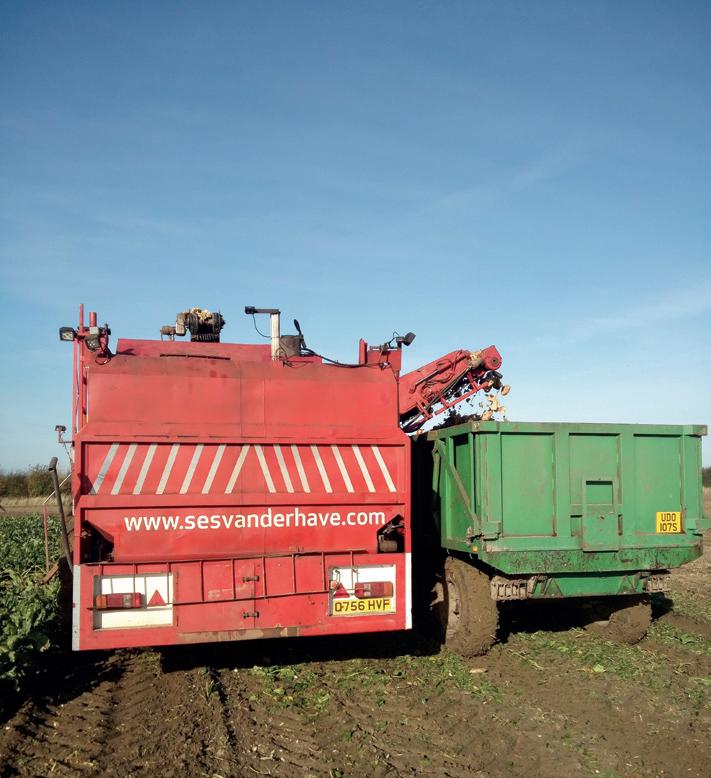
sugar beet area. This ensures we don’t fixate on a limited number of replicated sites but stay connected to regional, soil type and management types to help select our growers and ourselves select varieties.
With extensive experience, we’re proud and excited to have fast-tracked our new rhizomania tolerant variety Gadwall and beet cyst nematode tolerant variety Hoopoe for UK growers in 2025.








Anew oilseed rape variety from RAGT’s revamped breeding programme has more than matched expectations in trials by CMG Agronomy in Norfolk.
RGT Blackmoon looked impressive all season in the 3ha strip trial, says CMG director Craig Green. “It was visually greener throughout and put on more biomass than the other three hybrid varieties in the trial. It outstripped them in terms of vigour from the start.”
Further ahead
Craig has used for a couple of seasons; and Academic, which was promoted to the Recommended List last year. Blackmoon was even further ahead of Ambassador, which has been Mr Green’s go-to variety for several years.
Carried out for ADM Agriculture, the trial was min-tilled and drilled on 8 August and had been treated with pig muck. Flea beetle damage was minimal. Seed rates aimed to produce 30 plants/sq m, but the Blackmoon stand ended up thinner than expected.


“There was visually less stubble than with the other varieties, but it still yielded much better,” says Mr Green. “Whether some seed just didn’t emerge I don’t know, but I was really impressed with how it coped.”
Mr Green says he certainly wouldn’t drill the variety any earlier.
“It is very vigorous – if you sow it in late July or the first week of August you might need some sheep. I see it as a later-drilled variety, best sown as you get towards August Bank Holiday or soon after when the main flea beetle migration has finished. That’s where it really fits.
“That said, there is a place for it probably any time in August in direct-drilled situations where less nitrogen is released during establish-


RGT Blackmoon is described as a variety with lots of oomph Grain storage and handling





ment operations, and where drills are wider and rows take longer to fill in.”
This autumn, Mr Green says he is placing RGT Blackmoon with four oilseed rape growers to compare it with the farm standard or Duplo.
“I want to make sure this result is not a one-off before committing further. But it certainly didn’t pull its punches this season – it genuinely has a lot of oomph about it. Too often you put varieties in a field that are supposed to, but they don’t really show it.
“Vigour is key for me. A small crop at the end of September is always going to be really hard to keep alive. If the crop is up to my shins by Christmas I’m comfortable.”
framed buildings Groundworks All types of concrete
projects Phone: 01379 678459





























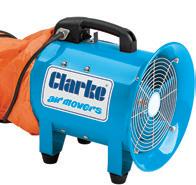






































Chris Harrold has been promoted to head of crop nutrition at Yara as part of a wider agronomy review within the company’s UK operation.
Yara said it was adapting its agronomy advice to improve crop productivity – and do so sustainably – as more growers moved towards a more regenerative approach to food production.
Mr Harrold said: “The review of how our agronomy team supports our customers will ensure we continue to adapt and provide relevant advice that meets their needs.”
Working together
Yara would achieve more with a collaborative approach, added Mr Harrold. “Farmers are adapting their cropping to deal with changes in the economics of growing certain crops and are considering growing alternatives,” he said.

Plant breeder Limagrain has appointed Florentina Petrescu (pictured below) as the company’s new oilseed rape product manager.
Ms Petrescu brings a wealth of experience and expertise to the role, having held the position of seed specialist with Nickerson for the last eight years. She will oversee the development of Limagrain’s oilseed rape product line.
As a farmer-owned co-operative, Limagrain is at the forefront of developing higher-yielding rape varieties with stronger agronomic characteristics and better disease resistance for growers, said Ms Petrescu.
“Despite recent difficulties, there is much to be positive about with regards to oilseed rape production in the UK. It remains the most profitable break crop,
“They are also looking at how they can best make their crops more resilient to extreme weather. Agriculture is changing, and the support and advice we offer must change with it.”
Recently formed partnerships between Yara and companies such as Simpsons Malt and PepsiCo Europe were good examples of how collaboration could drive meaningful and lasting change, said Mr Harrold.
“Collaboration with ambitious partners like Simpsons Malt and PepsiCo Europe is really important. The agronomy team are already involved in that, and I suspect that this approach to how we do business will only grow.
“As a company, we have it all; the crop nutrition solutions, digital tools, and sound agronomic knowledge. How we exchange knowledge going forward will be through our partnerships.”











































See us at Agri Expo -March 7th











See us at Agri Expo -March 7th









STRIAL, AGRICULTURAL OR COMMERCIAL TERNAL OR EXTERNAL
•INDUSTRIAL, AGRICULTURAL OR COMMERCIAL
•INTERNAL OR EXTERNAL

•STEEL FIXING

USH, TAMP OR POWER
•STEEL FIXING
TAMP OR POWER
•BRUSH, TAMP OR POWER
FLOATFINISHES
FLOATFINISHES
FLOATFINISHES
•FOUNDATIONS
•FOUNDATIONS
POULTRYUNITS AND STABLE YARDS
•FOUNDATIONS
• POULTRYUNITS AND STABLE YARDS
• POULTRYUNITS AND STABLE YARDS


MATERIAL ADVICE AND COSTING
MATERIAL ADVICE AND COSTING
• MATERIAL ADVICE AND COSTING
•SILO BASES
•SILO BASES
•SILO BASES
Wisbech, Cambs
RONS &SHED FLOORS
PRONS &SHED FLOORS
•APRONS &SHED FLOORS
NAEROBIC DIGESTION
•ANAEROBIC DIGESTION
•ANAEROBIC DIGESTION TANK BASES
TANK BASES
•GRAIN, POTATO& MACHINERYSTORES
TANK BASES
•GRAIN, POTATO& MACHINERYSTORES

•GRAIN, POTATO& MACHINERYSTORES
•PATHS, PATIOS AND DRIVEWAYS
•PATHS, PATIOS AND DRIVEWAYS

•PATHS, PATIOS AND DRIVEWAYS
•GROUNDWORKS & PREPARATION
•GROUNDWORKS & PREPARATION
•GROUNDWORKS & PREPARATION





















• Health status important for seed
• Use best seed in the right places
• Germination still key to success
Growers using winter wheat seed more than a year old are advised to check its condition before drilling to ensure plant populations do not disappoint.
Above: Seed treatments will remain effective within time limits
Stored in a modern, dry, and rodent free grain store, any loss of germination should be minimal. But germination can be suboptimal where seed has been kept in less than perfect conditions.
“Reductions of 10-20% are common, but in much poorer conditions, where moisture or rodents and insect pests are present, for example, the figure can be much higher.”

or burn treated seed, as regulations stipulate that it must be disposed of by a specialist contractor, but this comes at a price.
“By far the safest and most economical way of dealing with any overyeared treated seed is to plant it, even if you need to use a very heavy seed rate.”

That’s the advice of Certis Belchim’s seed expert Adam Nears, who says there is likely to be a reasonable quantity of seed carried over from last autumn following many months of wet weather.
Below: Seed samples should be properly tested, says Adam Nears
Seed merchants offer germination tests for customers, or samples can be sent to an independent laboratory like NIAB, which charges about £60/sample.

NIAB’s basic analysis includes germination, thousand grain weight and a seed rate chart, to ensure establishment hits the target plant population.
A final consideration is the situation into which over-yeared seed is planted. Mobile seed cleaning and dressing contractors cannot run treated seed through their equipment a second time to apply additional treatments.


“Growers worked hard to take drilling opportunities as they occurred, but there is still a proportion of winter wheat seed sat in sheds this summer.



“There’s no reason why it shouldn’t be used this year, but it will need a health check and must be drilled into the most appropriate situation for successful establishment.”



The most important piece of advice is to get samples of over-yeared seed germination tested, says Mr Nears.




Conventional seed treatments may have been applied to the seed, like a single purpose dressing (SPD), with or without take-all product Latitude (silthiofam), says Mr Nears.
If seed is only treated with an SPD, it will be ill advised to plant it into a field where take-all risk is high, such as a second or third wheat, as the crop won’t be protected against the potentially devastating soil-borne pathogen.



These treatments have no negative effect on seed viability and the active substances will remain effective when sown within 12 months of treatment.




Where the germination of a treated seed lot is found to be poor, growers should not be tempted to dump




In these cases, Mr Nears says it would be best to plant into a lower risk first wheat situation and use fresh seed treated with and SPD + Latitude in the second wheat slot, where Latitude typically gives a 0.55t/ha yield response.
“The wet and mild winter, followed by a wet spring, plus the abundance of grassweeds that host take-all inevitably mean the build of inoculum poses a significant risk to susceptible following crops.”


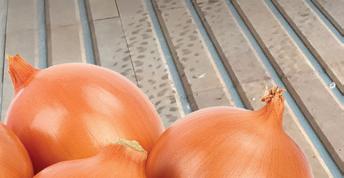







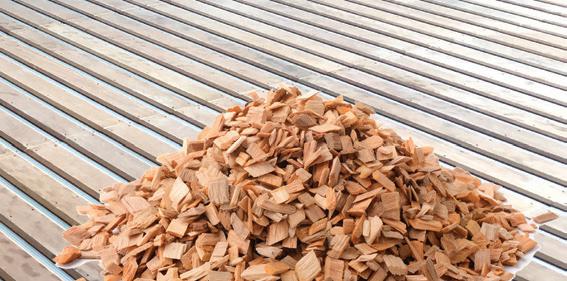








Hutchinsons national seeds manager David Bouch highlights his wheat and barley recommendations for drilling this autumn.
Several new wheat and barley varieties are vying for our attention this autumn. But with many sectors, the choices on offer for growers have not changed dramatically this year.
Following last autumn’s launch of new hybrid varieties tolerant to Barley Yellow Dwarf Virus, this season sees BYDV resistant barley SY Kestrel come to the market. But seed availability is extremely limited, with only
a few hundred packs available.
The Hyvido share of the feed barley market is likely to remain at similar levels this autumn at circa 27%, although there will be greater growth from 2-row barleys in the shape of both LG Caravelle and the newly recommended LG Capitol.
KWS Tardis will undoubtedly remain a popular choice, having taken the market by storm in autumn 2022 and gaining increased market share in autumn 2023.
KWS has its first hybrid barley in the guise of KWS Inys offering very high yields, stiff straw and very low brackling. Early maturity (-1) coupled with good untreated yield provides a different route to market for hybrid barley.
Crusoe and RGT Illustrious will be the varieties most preferred by millers, as they were last year. Newly recommended SY Cheer is cleaner than many tried and tested varieties but it has yet to gain full approval as a Group 1.


There are two new outstanding feed wheat considerations on the back of the very successful KWS Dawsum and Champion, with LG Redwald having set the standard for yield potential.
Bamford has strolled on to the Recommended List as the highest yielding Group 3 wheat. It off ers yields at least 6% higher than its contemporaries, with potential for biscuit making (with premium) distilling and export. Only KWS Extase has higher untreated yield. Its regional performance in the west merits further consideration.
LG Beowulf (below) has joined Champion at the top of the RL, providing excellent yield in the north and stiff straw – scoring 8 for both treated and untreated resistance to lodging; excellent grain quality, very good yellow rust resistance and decent for

With SY Cheer likely to be further evaluated on this year’s performance, Skyfall and Zyatt still hold a significant presence within the sector – despite needing greater management particularly for yellow rust.
Skyfall does have other advantages though, offering the greatest drilling window while still being the only variety in Groups 1 and 2 to offer Orange Wheat Blossom Midge resistance.
KWS Extase will remain the market leader in the group 2 sector while KWS Ultimatum offers potential for growers further north.
Blackstone is the new soft Group 4 from Elsoms to challenge LG Redwald with excellent yellow rust resistance and superior standing ability and bushel weight.
Gleam still appears to have remarkable consistency and Graham remains a very popular choice in the west. It of course is also suitable for early drilling which we are likely to see more of this autumn.


• Recent rain reduces soil sulphur levels
• Soils require correction of key nutrients
• Higher yields and quality among benfits
Strategic applications of soil sulphur and other key nutrients this autumn will give winter crops a vital boost ahead of spring growth.
With soil still recovering from an extremely wet season, adequate nutrition for establishment will be essential if crops are to deliver their full potential next year, says agronomist Scott Garnett, of ICL Growing Solutions.
Months of wet weather have depleted nutrient levels – and the effects of poor early root development and weaker plants will be difficult to counter with spring applications alone, he explains.
"Every seed sown has a theoretical yield potential which can be reduced over the growing season by a host of factors including poor seedbeds, adverse weather, pest and disease, so giving crops the best start possible is key.
"Effective establishment is the foundation on which yield and quality of autumn-sown crops is built and adequate nutrition in this period is critical.”
Taking sulphur as an example, a review of independent analyses by Lancrop Laboratories over recent years shows a growing number of soils are deficient in sulphur following the reduction in emissions from industry.
"The amount of sulphur from the atmosphere is around 2% of that occurring in the 1970s – totally inadequate for the nation’s farmland –with as much as 97% of UK soils now classed as ‘low’ or ‘critically low’ for sulphur deposits.
"The last year's high levels of rainfall have made an already poor situation much worse and remedial action should now be a priority for growers.
"A good supply of key nutrients in autumn will not only encourage ear-
ly formation of root mass and strong plant growth, it will also ensure plants grow away strongly in spring."
More efficient
Three-years of trials carried out by ICL and independent field trials specialists Envirofield, have shown better nutrient utilisation efficiency and increased root development from autumn applications of multi-nutrient Polysulphate, he explains.
"Spring applications of Polysulphate have been shown to increase wheat yields by 5-8%. Adding an autumn application can increase yields by a further 0.3t/ha and significant-

phate during winter.
"This results in a typical 30-40% increase in root mass with this larger root mass improving the plant’s ability to access more soil-bound nutrients and water leading to a stronger, healthier plant going into the winter.
Scott Garnett collecting

"This is highly significant when you consider an extra centimetre of root on each plant will touch an extra 130 tonnes of soil per hectare.
Applying 100kg/ha of Polysulphate to winter wheat increased phosphate and nitrogen uptake by 41% and 28% respectively in ICL autumn trials during 2020/21. Other trials suggest this represents a £45/ha return on investment.
A big benefit of using Polysulphate (48% SO3, 14% K2O, 6% MgO and 17% CaO) in autumn is that it provides a prolonged release of plant soluble sulphur over 50 days in addition to essential potash, magnesium and calcium.
"As plants can only take up so much sulphur at a time, this prolonged release enables roots to take up nutrients as and when they need it,” says Mr Garnett.
"It also helps reduce potential losses of valuable nutrients into water and air, improving both the efficiency with which plants take these up and reducing possible environmental issues."
Nottingham University trials have shown over 50% of the sulphur con-

tained in Polysulphate is available in the first 12 days after application with the remainder released over the following 6-8 weeks."
ICL recommends 100kg/ha of Polysulphate or ICL PKpluS or PotashpluS is applied in the autumn in addition to spring applications. "Use of Polysulphate is both simple and flexible with a range of options to suit all farming systems.
"The product can be applied from early October to before Christmas either as a straight or in a blend as part of a grower's autumn fertiliser programme. It can be broadcast using conventional fertiliser spreaders or direct-drilled with the seed."
“
Giving crops the best start is key

Sulphur applied in autumn improves retention of other nutrients and helps capture/retain soil nitrogen reserves. In oilseed rape, it will reduce senescence of lower leaves over winter.
Phosphate defi ciency leads to reduced movement of all nutrients around the plant resulting in poor establishment. More phosphate can be removed at harvest than is applied so monitoring of indices is essential.
Potassium is involved in every single process within the plant and essential alongside sulphur to maximise nutrient use effi ciency.
Calcium and magnesium are both critical for root development and seed establishment and essential in allowing plants to utilise residual and mineralised nitrogen in the soil.






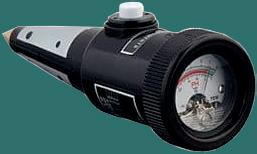






• Mixed approach bears best result
• Be flexible – but also disciplined
• Trial
Early-sown winter wheat is yielding well and profitable once again on heavy land at Agrovista’s flagship trials site in Northamptonshire – despite a huge background blackgrass population.
“Historically, if wheats weren’t drilled by mid October you risked not getting them in at all,” says Agrovista consultant and Lamport AgX trials co-ordinator Niall Atkinson. “But going earlier was asking for trouble.”
The Lamport AgX trials site has solved this conundrum, says Mr Atkinson – by using sequences of autumn cover crops and spring break crops to reduce blackgrass pressure, minimising soil movement and improving soil health.
This strategy – supported by an appropriate herbicide programme -- has proved itself over several very different seasons. “After a run of autumn cover crop/spring breaks, we are now successfully alternating winter wheat with a cover/spring break.”
In 2023, first winter wheats averaged just under 10.5t/ha following a range of crops, with some plots exceed-
ing 12t/ha, with almost no blackgrass – a big improvement from a decade ago when blackgrass populations exceed ed 2000 plants/m2.
“You need to choose your fields carefully and stick to the guidelines or risk going backwards. You also need to be reactive – if something goes wrong and blackgrass starts taking hold, you may need to delay your first wheat and grow a further cover crop/spring crop break.”
Much of the work carried out at Lamport can attract valuable Sustainable Farming Incentive payments. But whole field SFI actions are proving difficult to integrate into rotations at Lamport due to the enormous blackgrass challenge.
Over-winter cover crops, the main stay of operations to control black grass and improve soil health, are currently worth £129/ha, but that’s just the start. Several other options that now attract payments under the scheme are under scrutiny.
Winter bird food (AHL2) and leg
Above left to right: Septembersown first wheat; spring wheat and 10 beans; and low input cereal
Below left to right: The Lamport AgX trials site and trials coordinator Niall Atkinson


ume fallow (CNUM3), look tempting on paper, paying £853 and £593/ ha/year respectively. But both plots, which were drilled in April, have been destroyed.
Hamish Wardrop, Agrovista’s rural consultancy national manager, said: “The winter bird food established OK but there was a mass of grass weeds as well, and the pressure was too high to continue with it on this site.
“The legume fallow also established reasonably well, but it suffered bad-




A low-input cereal action (AHW10) aims to create an open-structured cereal crop that encourages wildflower species to grow within it, providing habitat and summer foraging for birds, pollinators and other wildlife.
It pays £354/ha/year, and a further £129/ha is available for a preceding
over-winter cover crop. Normal fertiliser, fungicide and growth regulator inputs and rates are permitted –but herbicides are restricted.
“You have to sow the cash crop at a reduced seed rate – we chose spring oats and went at two-thirds rate, or 270 seeds/sq m,” explains AgroVista technical manager Mark Hemmant.
You need
to choose your fields carefully

“We have to select carefully where to grow it on at Lamport, but we have achieved the aims; while is a little bit of blackgrass coming through, if you are well on top of grassweeds and have a good rotation, it could be useful.”
The benefits of adding beans to a spring wheat crop at 10 seeds/sq m are also being assessed. That would attract a £55/ha companion crop payment under SFI for a seed cost of about £15/ha, and could help miti-
“The net benefit of what you spend on bean seed compared what you get back looks good, provided there are no adverse effects on blackgrass control or yield,” says Mr Hemmant.
The beans were destroyed around flag leaf timing as some inputs are not approved for that crop, but the crops appear to have thrived.
“Black oats in the cover crop aren’t enough to prevent take-all in a wheat-dominated rotation in an autumn like 2023. But if we introduce wheat plus beans in the spring, might the undoubted soil benefits that beans bring change things?”
Providing targeted nutrition when drilling is key to giving your crops the best possible start in life.











Take the NEW Amazone Triple-shoot system - it gives you the flexibility to sow your cash crop along with a companion plant and fertiliser - all at three different placement depths and all in a single pass.
The beauty of the Cirrus Triple-shoot, multi-hopper concept, is that it can place fertiliser in the row and/or between the rows when sowing, can drill three different seed varieties - either in one row or up to three different rows - and even broadcast on the surface.







Get the full story, visit: triple-shoot.com/en or call Amazone Sales on: 01302 755 725 or contact your local dealer.




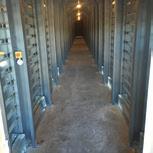





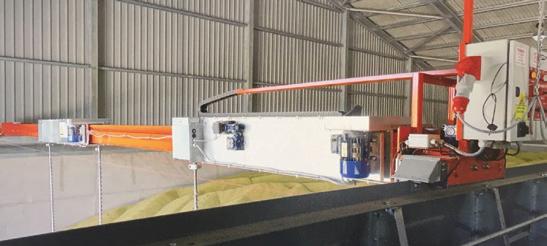















Addressing nutrient defi ciencies before autumn drilling will help get crops off to the best start.
Growers will be keen to ensure crops are strong and can withstand winter weather given the difficulties of the previous growing season.

Early crop development is essential and a key nutrient for this is phosphate, which growers can apply before or immediately after drilling as part of a balanced nutrition programme.
Assessing deficiencies using a detailed soil analysis will help pinpoint areas that require the nutrition. But growers can use another test to inform their decisions, says Toby Ward, nutrition agronomist at Origin Fertilisers.
“Undertaking grain nutrient analysis will measure nutrient offtake in the previous season and indicate where hidden deficiencies could lie, while providing a cross reference for soil analysis.
“A detailed soil analysis will indicate what should be available to the plant, while a leaf analysis shows the status of the crop at a given point, but a grain nutrient analysis provides the final outcome.”
Growers can use this information to target nutrition inputs, maximising any spend on fertiliser this season.
Some 86% of grain samples analysed by ADAS in 2020 showed nutrient deficiencies –and phosphate was by far the most deficient of all nutri-
Above: Deficiencies can go unnoticed over time unless they are addressed
Field-by-field information is essential
ents. Over 50% of samples revealed a lower level than the target Index 2.
This is a concern because deficiencies can go unnoticed and worsen over time if they aren’t addressed correctly through targeted prescription applications. Phosphate promotes crop establishment and is part of a balanced nutrition plan.
“Grain analysis offers growers a much clearer insight into how much phosphate was taken up by the plant and where potential deficiencies might be,” says Mr Ward.
“Given the importance of phosphate to early establishment, choosing a grain nutrient analysis will support applications to the right fields and area of the farm, maximising the investment in nutrition.”
One change that should be considered by growers is to increase the availability of phosphate by applying a protected product, such as Origin Enhanced Phosphate (OEP).
The main reason for lock up is due to soluble phosphate being negatively charged and becoming rapidly fixed by positively charged calcium, magnesium, iron and aluminium, which makes it unavailable.
This is heightened when soil pH is too high or low, or in heavy soils. The upshot is that although plants require the nutrient for early development, its lack of mobility and availability restricts young crops from accessing it.






A grain nutrient analysis can also reveal other nutrient deficiencies, and over 25% of the samples analysed by AHDB were low in manganese, which highlights the importance of micronutrient applications on a yearly basis.
But changing to a phosphate fertiliser that prevents lock up and maintains a greater supply for the young plants should be of high consideration




Using prescription nutrition to improve these indices will support crop growth throughout the season.




Between 75-95% of the phosphate fertiliser applied will become unavailable to the plants through lock up, and its lack of mobility means plants need to search for it.




“A protected phosphate, such as OEP, contains Avail – a phosphate fertiliser
Continued on p33





Continued from p31
enhancer on each granule – that starts to dissolve when the granule contacts moisture,” says Mr Ward.
“It attracts the positively charged ions, preventing them from binding with the phosphate as it dissolves, effectively acting as a shield. The result is the soluble phosphate released by the granule is fully available for the growing crop.”
OEP is available as TSP and DAP fertilisers, as well as any P, K blends, to provide crops with targeted nutrition to support early development. It has been shown to reduce phosphate fixation by up to 15%, offering a bet ter return from phosphate fertilisers.
Further independent research by Harper Adams University College showed a 40% increase in root mass after three weeks where OEP with Avail protected technology was used.
As attention turns to drilling follow ing harvest, ensuring that any nutri tion ordered for post drilling applica tions will be on farm, when you require it, will be down to relying on trusted suppliers with continued access.
Growers planning to take grain nutrient analysis to support nutrition decisions should use clearly labelled buckets to collect grain from individual trailers that correspond to specific fields before the grain reaches the store.
Taking the sample once the trailer is tipped can lead to grain from other fields being included and, therefore, limiting the opportunity for benchmarking, says Toby Ward, of Origin Fertilisers.
“This is essential if growers want true information down to a field-by-field basis. When the combine is harvesting a specific field, each trailer
should be sampled by taking two cups of grain and adding it to the bucket.
“Once the field is completed, the sample can be mixed before filling a sample bag to be sent away for the analysis.”
Completing grain nutrient analysis in this way – along with with the correct details – will offer growers an accurate and precise way to record exactly how the crop has performed this season.
It accounts for all inputs and will support decision to change these for the following season,” says Mr Ward.

“Using a supplier that has experience of the region, and an established supply network to cater for growers in the area, will be key,” says Mr Ward.
Growers need to rely on established fertiliser production facilities with the ability to supply the right crop nutrition to farms as they require it.”
Origin’s production facility at Great Yarmouth caters for growers across the region –enabling prescription nutrition to match field and farm requirements. The site is capable of dispatching over 1,000t per day in peak season to support growers.
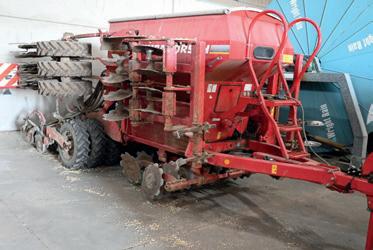





Grass weed management should vary according to crop establishment system.
Aflexible approach to grass weed management depending on crop establishment method can pay dividends, says a Suffolk grower.
Sam Slater operates a range of different establishment systems. These vary from no-till to plough – depending on the situation. Different establishment systems have a different impact on the weed profile, says Mr Slater.
“We have a meadow brome issue that has developed. I’m not convinced it is solely a no-till issue. I have analysed it quite a lot, and it’s certainly linked to min-till and a lack of ploughing. I also wonder if it is also partly due to our rotation.”
A double spring break crop can prove to be very effective in tackling meadow brome without resorting to ploughing, says Mr Slater, who farms at Stansfield, near Sudbury.
“We grow borage within our rotation, which has proved to be a decent break crop, especially because of its late drilling. Spring oats followed by borage has been particularly effective.”
Mr Slater is also getting extremely good brome control in winter beans. Later autumn planting allows for more opportunities to control brome
pre-drilling and use Kerb (propyzam ide) for control once the crop is estab lished.
Winter wheat tends to be drilled earlier in the autumn with the no-till system because of the limitations of disc direct drills in wet Hanslope series clay soils. He is also looking for a trash-free seedbed in this situation.

Decisions on what form of Avadex to apply should be made on an individual basis, say experts
Although drilling earlier may increase the grass weed pressure, Mr Slater believes the no-till system compensates for this by reducing the risk of a dry spell impacting the efficacy of pre-emergence herbicides.
“Arguably, you can get better residual herbicide efficacy in a no-till situation going early because you haven’t got a drier cultivated seed bed, and the weeds are closer to the surface.
“If the land has been min-tilled, it dries out much quicker, which delays herbicide activation and degrades active ingredients. Although the same can happen in a no-till situation if there is a prolonged dry spell.”
Mr Slater does not believe it is a straightforward picture in the autumn because of the complexities of the interaction between soil moisture and
“We control the timing
They use a robust pre-emergence mix and plan to follow this with a further top-up. “We don’t really back off for one situation or the other.”
Because of his mixed grass weed population and meadow brome in particular, Mr Slater tends to include Avadex Factor (triallate) in his pre-emergence mix, saying the benefits of doing so are clear.
“Meadow brome is a concern for us, as well as black grass, and we are aware that there is more efficacy in triallate (against brome) than some of the other residual herbicide options. That has driven our choice.”
Practicality drives the choice between liquid or granular Avadex. Their land is spread out, they do not own an applicator and getting granules delivered at the right time and place for a contractor to apply is unfeasible.
“Choosing Avadex Factor is about logistics for us. We control the timing; it is going in our sprayer, so we control our pre-emergence herbicide application.”
Farmer opinion is split over the merits of liquid Avadex Factor and granular formulation Avadex Excel. While Avadex Factor can be simply tank mixed with most other pre-emergence herbicides, the higher loading of triallate in Avadex Excel has led many farmers to opt for an additional granular application.
Reflecting on the performance in trials last season, Gowan technical lead Will Smith believes the performance of Avadex Factor and Avadex Excel is closer than many farmers may think.
“It is pleasing that both Avadex Factor and Avadex Excel are continuing to deliver a big
benefit in weed control when used alongside other herbicide options as part of a grassweed control program,” says Mr Smith.
“We have picked up this season that Avadex Factor is performing extremely well and, in some cases, even as well as Avadex Excel .”
“This is a trend we have noticed over the last few seasons, particularly when it has been wet at drilling. Our understanding is this is related to the formulation in these circumstances.”
Mr Smith says Avadex Excel still tends to deliver better control across a range of situations. Growers who have application equipment or a good local contractor who can deliver timely ap-
plications should continue to use it, he believes.
But farmers unable to apply granular products should have confidence that positive results for Avadex Factor means they can still improve their grass weed control by including liquid triallate in their herbicide programme.
Later drilling is where both products may sit alongside one another, adds Mr Smith.
It’s all very well drilling late, but programmes may look different in this situation, he explains.
“The weather may only allow one chance to get applications on. In this situation, Avadex Factor is a strong herbicide to be included in a tank mix.”
















"Winter barley is on the turn. Winter beans are unbelievable. Neighbour has some winter beans and they are going yellow and half the size of our Triton drilled beans. Quite amazing what the Triton has done here".
To attend a demonstration call 01223 891888
Triton UK
01223 891888
hello@tritonseeddrills.com
Service Line: 01223 891888


Following the success of the trailed versions of the Progressive Cultivator, we are pleased to now offer a more costeffective alternative.
A fully mounted model which suits larger horsepower wheeled tractors and smaller tracked machines.


Comprising of Discs, new Low Disturbance Tines and an all-weather compatible Packer.
Trialled in 2022; in some cases it outperformed the larger trailed versions on output and cost per acre basis. Call now for more details on the







• Brings agronomists and growers
• Harnesses technology for better
• Phased launch focuses on
Anew service aims to make the benefits of precision farming readily accessible without growers having to master all its complexities.
FieldSense uses satellite mapping of soil and crop variability across fields, says ProCam regional technical manager, Nigel Scott, who has been
This is then used to derive varia ble rate input applications tailored to these variations, rather than rely ing on a blanket approach. The goal is to improve economic crop output across the field and bringing environ mental gains.
Accessed via a web browser, the FieldSense system is based on a collab orative approach between the agrono mist and grower – rather than farmers having to do everything themselves,

“It will be the ProCam agronomist who makes sense of the satellite im ages, drawing on their boots on the ground experience of the field and ground-truthing any anomalies that
This can be combined with the farmer’s own knowledge of the field as necessary. Growers can also pick only those parts of the package relevant to their farm and machinery –or begin by trying the system over a

Below: Variable rate drilling and fertiliser applications are just two packages available
“Once maps have been interpret-
Fields are mapped into various sized grids – one hectare squares for soil sampling, 24m grids for variable rate fertiliser spreading, and 6m grids for variable rate drilling, or the most appropriate grid size for the width of machine.
“The variable rate drilling package

multiple years,” , says ProCam regional technical manager Harry James.
“From these, the agronomist will create a variable seed rate plan – to drill more seed in historically lower biomass grid squares and less seed where less is needed – with the aim of achieving a uniform, optimum tiller density over the field.
“In one test, we’ve found that almost double the seed rate was needed in poorer areas of a field to bring tiller numbers back up towards the better areas. Without this knowledge, poorer areas would have been drilled at sub-optimal density, risking sub-optimal yield.”
For soil sampling, the location of samples in each hectare is recorded by GPS and shared back to the FieldSense platform. Maps are then used to create variable rate spreading files to correct nutrient deficiencies, and for liming if required.
Variable rate nitrogen application, on the other hand, uses satellite measurements to create a normalised difference vegetation index of the growing crop. Nitrogen is then applied
FieldSense is the latest in a sequence of new services from ProCam. It follows last year’s launch of the SoilSense soil testing and nutrient planning service.
“Growers face increasingly heavy workloads and pressures from legislation and environmental scrutiny while at the same time farm profi ts are volatile and under pressure,” says ProCam UK managing director Alex Collingwood.
It provides a way to reduce the complexity of precision farming for growers, while bringing greater accuracy to agro-
accordingly.
nomic decisions. In the case of variable rate application of nutrients, potential SFI payments of £27/ha are available.
In essence, FieldSense offers focused use of key inputs for optimum crop output through partnership, technology, and boots-on-the-ground collaboration, adds Mr Collingwood.
“Satellite image fi eld maps are one element of precision farming, but they are just the start. They need underpinning with solid fi eld experience to interpret and make sense of them.”
These are taken every 5-7 days on a 10m x 10m grid or every 3-5 days on a 3m x 3m grid. The aim is to use variable rate nitrogen to produce the optimum green area index (GAI) over the whole field.
Farm-testing in oilseed rape where GAI in March was found to vary from

a near optimum of 3.0 to just 1.0, showed that by varying N dose between 60 to 90 kg/ha, crop uniformity was corrected by early June.
In fields where yield mapping is carried out on the combine harvester, yield data can also be uploaded into FieldSense to guide future agronomic decisions.



Experience precision farming like never before with the introduction of E-Services for TopDown and Opus.
Now these machines can seamlessly utilise prescription maps for automatic, in field machine adjustments.
Alternatively, with a touch of a button the driver can dynamically adjust the working depth or intensity of the discs, tines, levellers or packer while in operation.


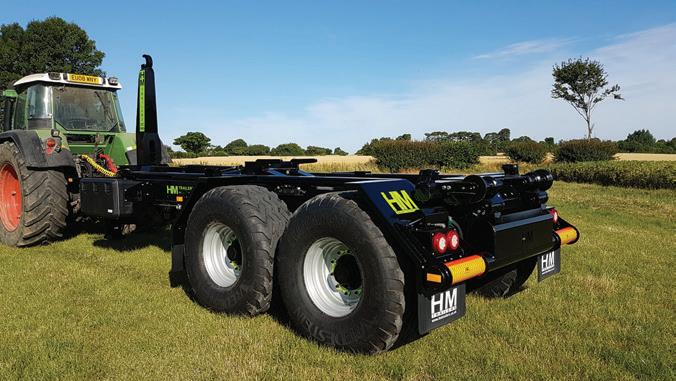



Farmers could spread the risk of growing feedstock crops for anaerobic digestion by drilling hybrid barley this autumn, says a plant breeder.
Wholecrop hybrid barley offers a flexible buffer crop to supplement maize in AD plants – grown either in addition to or instead of wholecrop rye, says Syngenta area business manager Henrietta Wells.
“In years when maize silage stocks are tight – which is potentially the case this season after many maize crops had a poor start – then more wholecrop hybrid barley can be included as a feedstock to supplement the maize,” says Ms Wells.
“But in seasons where maize silage is plentiful, a big benefit of hybrid barley is the flexibility to harvest it later as mature grain, rather than as wholecrop – with barley grain being relatively
easy to sell compared with rye grain.”
Syngenta hybrid barley has shown strong suppression of several key grass weed species. Another benefit with wholecrop hybrid barley can be its earlier harvest than rye and certainly than forage maize, she notes.
“An early harvested crop is useful on multiple counts,” says Ms Wells. Feedstock is available sooner than a later crop, it spreads the harvest workload and it allows a longer window for field cultivations and planting the following crop.
“If you harvest early enough, there’s also the potential to get wholecrop hybrid barley in before blackgrass seed has shed – reducing the amount of amount of weed seed returned to the soil.

Wholecrop is often harvested at 35% dry matter. Hybrid rye might produce a slightly higher gas yield per tonne but hybrid barley is a high-yielding crop and the agronomics of grow-

Hybrid barley is ideal for anaerobic digestion, says Henrietta Wells
• Up to 25% more power and torque
With the Steinbauer Plug’n’Play solution
• Safe and Reliable
Manufacturers ECU safety settings remain in place.
• Precise Optimisation
Performance increased upon engine load
• OEM Quality
Automotive industry standard
ing barley can be more familiar to growers.
“The high-yielding Hyvido hybrid barley, SY Kingsbarn, is a good option for wholecrop for anaerobic digestion – or possibly SY Nephin with its robust disease resistance if you’re looking for something easier to manage.”

• Field Tested Tested and sold Worldwide


• Installation and Dyno tested* Installation/dyno test at your location
• Stage V engines compatible
All the latest machines covered
• Knowledge is Power Installing power modules in the UK for 20years
STEINBAUER Tuning Technologies UK Ltd.
Kings Lynn Norfolk PE34 4PU, U.K.

Tel: 01553 829990 Email: info@steinbauer.uk
Norfolk Metal Detecting Club
• Norfolks non profit metal detecting club
• Earn extra cash from your land and reveal the history.
• Locally based fully insured team with a wealth of knowledge
• Any land considered



• Removal of scrap metals
• Field reports available per dig.
• Recovery of lost jewellery/farm machinery parts upon request.
Further details found: www.nmdc.uk or contact us: history@nmdc.uk



l Order via our online shop for next day delivery
l Comprehensive range of hydraulic adaptors, BSP, JIC, ORFS, DIN 2353 tube fittings and many more available in stock
l Stockist of premium quality Quick Release Couplings and hydraulic Test Point fittings.
l Family owned UK manufacturers of premium quality hydraulic adaptors for over 55 years.
l In excess of 36,000 components manufactured every day
l ISO 9001 accredited.







Precision farming requires precision drainage (with RTK GPS mapping and machine control)
Cost effective land drainage
Most modern equipment
Excavations & precision levelling Contact Chris or Colin 01986 781404
High Street, Ilketshall St Margaret, Bungay, Suffolk NR35 1NA




FARM WASTE RECYCLING



-COVERING ALL OF EAST ANGLIAPay Per Bag I Pay Per Acre 95% of Material Collected Recycled Professional Reliable Service
Members of the Green Tractor Scheme Office: 01763 287 317 I Yard: 07934482383
info@kelshallplastics.co.uk I www.kelshallplastics.co.uk
Materials Collected: Spray Cans, Fertiliser/Seed Bags, Cardboard, Silage Wrap, Feed Bags, Plastic Film, Baler Twine and Net Wrap
Discounts Available for Members of North Herts Farmers, Ceres Rural, Anglia Farmers, Fram Farmers & LW Vass
OUR DELIVERY ADDRESS IS: SLIP END FARM SLIP END BALDOCK HERTFORDSHIRE SG7 6SG




JDP supports the modern farm with products and solutions for livestock and equine feeding, cleaning and hygiene.
• CROP & ANIMAL HUSBANDRY
• LAND DRAIN
• MAINS SUPPLY
• STORMWATER







• RESIDENTIAL CONTACT US
JDP Cambridge 01223 654310 cambridge@jdpipes.co.uk






JDP Norwich 01603 931318 norwich@jdpipes.co.uk www.jdpipes.co.uk





Water company bosses are scrutinising consultation responses for two new major reservoirs – one in the Cambridgeshire Fens and the other in south Lincolnshire.
Located near Chatteris, Doddington and March, the fenland reservoir is planned by Anglian Water and Cambridge Water. The Lincolnshire reservoir will be about four miles southeast of Sleaford. It is being developed by Anglian Water and Affinity Water.
Both reservoirs are being developed to help meet growing demands on regional water supplies for the east of England. Together, they are expected to cost more than £4.8bn. A second consultation on the proposals closed last month.
Already one of the UK’s driest regions, the east of England faces increasing and often competing demand for water from businesses, communities and agriculture. At the same time, it faces increasing population growth.
The new reservoirs aim to strengthen the region’s drought resilience while protecting the environment by enabling a reduction in the amount of water taken from environmentally sensitive rivers and underground aquifers.
Mindful of the importance of food production, the NFU has requested that any expansion of the
region’s strategic water supply infrastructure should be carried out at minimum disruption to farmers, land owners and tenants.
It has voiced concern about the impact the building of such large reservoirs will have on farm businesses and agricultural production on a permanent basis, and during construction, when more land will be required on a temporary basis.
Anglian Water says the quality of agricultural land and potential impacts were considered in the site selection process for both reservoirs. Given their size, it says all the sites considered had the potential to affect farmland.
It said: “It is clear people want us to think carefully about effects on place and communities, roads and transport, agriculture and the local economy, and the natural environment. These are important issues for us too.”
“The site we’re proposing was the best performing of all the sites we have considered – one which balances all of the factors we considered, and that also provides significant opportunities to unlock wider benefits.”
Anglian Water says it understands the effect on those impacted by our proposals including homeowners, landowners and the nearby community. It aims to respond to the consultation in the coming months.



A high-capacity pipeline is being constructed to transport water to some of the region’s driest areas.
The large-diameter, interconnecting pipelines stretching from North Lincolnshire to Essex will allow 265 million litres of water to be moved – helping to secure supplies for future generations while boosting drought resilience.
Anglian Water says the importance of the work cannot be underestimated. “Without our new drinking water grid, demand for water will outstrip supply meaning the east of England could run out of water as soon as 2030,” it adds.
The project forms a key part of the water company’s Water Resource Management Plan, which sets out how it will manage the region’s water supplies to meet requirements over the next 25 years.
Anglian Water chief executive Peter Simpson said: “Starting this programme is a signifi cant part of our planned investment in the region over the next fi ve years, which will begin to tackle those challenges and secure customer supplies well into the future.”

Ancient House, 6 Chapel Street, Steeple Bumpstead, Haverhill, Suffolk, CB9 7DQ




• Booms for lane widths 10 - 96 metres
• Hosereels from 150 - 750m pipe length
• Motorpump range; flow rates 30-150m3/hr

• Raindancer remote monitoring & control
• Fixtures, fittings, pipework and more...
visit our website: briggsirrigation.co.uk call us on 01536 260338 or email: enquiries@briggsirrigation.co.uk







Compensation and the impact of flooding on farm businesses will be among the topics discussed at a top conference this autumn.
The Flood & Water Conference will bring together farm leaders, government representatives, local authorities and other delegates. Organised by the Association of Drainage Authorities, it will take place on 13 November in London.
Speakers will include Defra floods minister Emma Hardy MP. Following widespread flooding last winter and spring, she is expected to outline the government’s strategy and water management plans.
NFU vice-president Rachel Hallos will also address the conference. The NFU has repeatedly called for a clear government plan to protect farmers and other agricultural businesses against flooding.
As a priority, it says this should recognise the public goods that farmers deliver – and include a proactive management plan for Environment Agency controlled watercourses and flood defences.
The NFU says farmland is often used to store flood water at great cost to the landowner to protect surrounding urban areas. It says farmers must be fairly paid for this with proper agreements that ensure land is able to properly recover.
Cambridgeshire fenland farmer Michael Sly, who chairs the North Level District Internal Drainage Board, will also address the conference. He manages water levels across 34,000ha between Peterborough and Wisbech.
Mr Sly, who spent ten years on the
Below: Water management needs a better strategy, say industry leaders
Anglian Northern Regional Flood & Coastal Committee, farms 2,000ha across three farming businesses in north Cambridgeshire and south Lincolnshire.
Floods last winter were described as unprecedented in terms of their impact on farming livelihoods – especially for growers and livestock producers in parts of Nottinghamshire, Lincolnshire and Leicestershire.

Farmers must be fairly paid for this “
Agricultural specialist Mark Chatterton, a director at accountants Duncan & Toplis, said the floods were the worst he had seen at any time in his 24-year career – largely due to their scale and timing.
Debris removal
this year have been far more costly for farmers than in 2019 and farms will face further costs as a direct result for years to come, likely with a poor harvest this year and poor cash flow for 2025.

‘key
Better water management is vital to improve farm profitability – while making food production more sustainable, says an irrigation expert. Practices which optimise water consumption while enhancing soil health will become essential as farmers grapple with climate change, says Jerry Knox, professor of ag-
ricultural water management at Cranfield University.
“We can’t continue to produce and consume food the same way we have in the past. Reconciling the water needs for food, the environment, energy and society remains a significant but surmountable challenge, as well
Continued on page 46




Lessons from a challenging year confirm that wheat performs best on welldrained soils, says Neil Watson.
Variable wheat yields this harvest are due to a number of factors – with drainage playing a key role in crop performance.
Some wheat crops have performed extremely well given the extremely challenging season, while others have barely reached half their potential –sometimes even within the same field.
The trend seems to be better or free-draining soils have maintained their yield capabilities, albeit with no record yields. Conversely, heavier and more poorly structured soils have seen their potential plummet.
More significantly, it has all been about soil drainage and root development. The ratio of 20:1 – the final above ground biomass production to below ground root production – tells you everything.
If root development is hindered, the knock-on effect on biomass will be all too evident.
The effects of temporary root drowning were not only limited to the winter. In some areas, heavy rain late in the season caused premature senescence just as the crop approached ripening.
Lack of biomass was all too evident from early spring onwards. Wet soils
Better drained soils with a good structure will help get the best from crops
hindered uptake of nitrogen at a vital stage. Lack of sunshine has significantly hindered biomass production.
This lack of sunshine was particularly early in the season at the construction phase – and many crops never caught up during the critical growth stages of the growing season that followed.
“In the latter stages it has not helped with grain fill either, subsequently bushel weights have suffered. Elevated temperatures towards the end of the growing season also led to accelerated leaf aging leading to negative effects in the grain filling phase.”
That said, lower temperatures throughout most of the critical spring and summer growth period helped to reduce the stress on crops.
Blackgrass control, or lack of it will
negate the effects of the autumn residuals.
Disease pressure played a key part in most areas.
Septoria pressure was high in the early part of the season, continuing through the critical months of April and May. The early drilled crops as expected were at the greatest risk with many growers struggling to keep leaf two clean.
Rust was a major risk this season, both yellow and brown in susceptible varieties, once in the crop in the base of the crop fungicide programmes struggled to hold the disease beyond three weeks.
Fusarium and ergot are more prevalent this year than most, primarily because of a wet flowering period. Other issues also mean it is no wonder we have seen a range of yields across farms and even fields.
Partly because the wet soils delayed applications, BYDV was more common among winter than spring crops this season. The wet winter did not help with take-all in cereals this year either, it has even shown through in

Continued from page 45
as an opportunity for change.”
Prof Knox outlines ways this can be achieved in a new book called Improving water management in agriculture: Irrigation and food production. Published this summer, the book highlights techniques to improve water usage.
Modern water management has been revolutionised by technology, with farmers and growers opting to invest in precision irrigation technologies to improve the productivity, profitability and sustainability of their farms.
Technologies such as variable rate irrigation systems and remote sensing platforms can be used by farmers to apply water more efficiently, which in turn reduces waste and environmental impact.
Efficient irrigation is important – but so too is good drainage design and management. Yet drainage is often overlooked, says Henk Ritzema, former associate professor at Wageningen University in the Netherlands.
“Drainage systems clean up the ‘mess’ other activities leave behind, like salts
brought in by irrigation water and residues of fertilisers and pesticides. Drainage is largely forgotten about – people don’t like to talk about it.”
To properly optimise water usage, Dr Ritzema says drainage systems must undergo a series of improvements which target increased control, reduce environmental impact, reuse drainage water and safely dispose of any drainage effluent.
The book – Improving Water Management in Agriculture – is a Burleigh Dodds Science publication. For details, see www.bdspublishing.com.

• Agricultural & Amenity Drainage
•
• Water Supplies, Mole Draining
Ancillary
& Ancillary Works




Sustainable water resource management Abstraction licence renewals
Borehole, reservoirs, surface abstraction, infrastructure, IT control
Grant aid applications
Reservoir planning, construction and management
Water efficiency
Water quality issues
Contact: 01263 733395 07785 935498 andrew.alston@farmline.com www.awmcl.co.uk









































• Wet season puts pressure on stores
• Remember Farming Rules for Water
• Grants and storage advice available
Livestock producers are being reminded to prepare now for winter slurry storage – and contact the Environment Agency with any concerns.
Wet weather throughout the year has already put pressures on slurry stores. And with further rain expected, the agency says it is important to have enough storage and a robust back
Wet weather can have a profound impact
up plan in place.
The agency’s Winter Ready campaign aims to support livestock producers across the country facing slurry storage issues. It includes some simple steps and solutions to tackle slurry storage issues:
• Ensure storage capacity is adequate for the winter – without the need to spread. Six months of storage will help comply with the requirements of the Farming Rules for Water to spread only according to crop and soil need.
• Cover slurry tanks, lagoons and pits – and ensure draining and clear guttering are working to ensure separa-
Storage capacity should be adequate for winter – and include a robust back-up plan
tion of clean and dirty water, meaning less rainwater mixes with slurry to increase its volume.
• Refrain from taking sludge, digestate or other materials if you don’t have an immediate need for them. Even if you are contracted to take these materials, all producers have a responsibility to ensure bi-products and waste are properly disposed of.
Nicola Riley, the agency’s deputy director for agriculture, said: “We know the profound impact that wet weather can have on farmers and their slurry storage. It is important we help farmers to get ready ahead of time.” Agency staff were on hand to help farmers find the most appropriate solutions, said Ms Riley. Defra had already offered a Slurry Infrastructure Grant to help farmers improve or expand slurry storage capacity and make better use of organic nutrients.
Other support includes a range of capital items available through Countryside Stewardship Capital Grants that can support farmers to reduce the amount of slurry generated on their farm.
This includes slurry store covers, roofing, concrete yards and drainage systems. A Catchment Sensitive Farming advisor can visit farms and provide advice on how these can best be utilised, said Ms Riley.
Many farmers have voiced concern about the best way to manage increased volumes of water. High rainfall this year means many farmers have accumulated more slurry. Yet at the same time they have been unable to spread it on their fields.
Scientists at Rothamsted Sesearch are pioneering a farmer-led water quality monitoring scheme as part of their new partnership with the Environmental Farmers Group (EFG).
Launched in May 2022, the EFG is a farmer-owned, farmer-led environmental cooperative aimed at securing the best environmental results and financial returns for a wide range of natural capital goods and services.
Members of the group have committed to ambitious environmental outcomes in the
form of restoring biodiversity loss, getting cleaner water in our rivers and moving to net carbon zero farming by 2040.
The EFG started in the Hampshire Avon catchment, bringing together five existing Farmer Clusters into a proper legal entity, able to deliver more ambitious outcomes by working together.
Rothamsted professor Adie Collins has been helping EFG design a water quality monitoring scheme which enables farmers
to better understand how they can benefit by reducing farm pollution in chalk streams.
He said: “This number of farmers working together in a coordinated way will have the capacity to make a real difference to water quality and other outcomes from farming as they face the extant climate change crisis.”
EFG chairman Rob Shepherd said more than 400 farmers had joined the group to tackle biodiversity loss and climate change. “As farmers, we need to look to these emerging markets to support our contribution to the environment and food production.”

















• Fast-growing options are available
• Mixes can qualify for SFI payment
• Lots of advice on hand for growers
Farmers facing a lack of homegrown forage this winter could grow an autumn catch-crop –and unlock additional revenue from the Sustainable Farming Incentive.
Lack of sunshine has restrict ed grass and maize growth. But one way to plug the forage gap is to plant a catch crop, suggests Simon Mont gomery of ProCam. Growers have three main options, he adds.
“They can either drill a fast-grow ing single species ryegrass ley, choose a triticale based multi-species mixture – which has the advantage of quali fying for an SFI payment under the SAM2 classification – or look at a for age and rye mix.”
High performance
For the first option, Mr Montgomery recommends ProCam’s Hurricane III mix from the company’s Field Options range. Based on a high performance hardy diploid Westerwold ryegrass, it is ideal where grass is required in a hurry, he says.
“Sown after maize, its combination of complementary varieties produces big cuts of silage early in the spring.”
UK trials show Hurrican III can deliver as much as 9t/ha of dry mat ter per hectare, says Mr Montgomery. “It is also suitable for spring and au tumn grazing when managed correct ly and will easily persist for at least 12 months.”

bust and faster establishing than forage rye which makes it ideal for the production of spring forage for early stock turnout and to reduce the reliance on bought-in feed when silage
Weed suppression

For producers interested a growing multi-species catch crop, which is eligible for an SFI payment, ProCam’s T101 N-Max seed mixture could more appropriate. It is based on an 80:20 mixture of forage triticale and hairy winter vetch.
“The triticale element is more ro-
Growers have three main catch crop options, says Simon Montgomery
“N-Max meets the SAM2 specification by providing over-winter ground cover which scavenges existing nutrients and prevents leaching losses and reduces soil erosion. It also excels at suppressing autumn weeds.
“Thanks to its ability to withstand even the harshest of winters which enables it to keep growing through the winter, it has the best potential for producing spring biomass with a similar feed value to forage rye.”
As a third option, N-Rich is also suitable for drilling after maize. Occupying the middle ground for farmers who might want to grow a triticale-based ley, it comprises an 80:20 split of forage rye and hairy winter vetch varieties.
“It too continues to grow even in very hard winters and produces a good biomass for spring cutting or can be grazed from January onwards. It is also SAM2 compliant which means producers can also benefit from an SFI payment.”
from Aldi supply partner Kepak. It says this will champion Great British quality while enhancing the quality and range of beef available to customers.
beef. It says the investment will allow farmers to plan confidently and provide security for supply chains up and down the country.
Part of the deal includes a five-year £260 million contract to purchase Aberdeen Angus beef
Aldi buyer Julie Ashfield said: “As the UK’s largest British beef retailer, we’re proud of our long-term relationships with British farmers across the country.
“The UK farming community plays a vital role in our food supply chains - our continued investment in British beef is in recognition of this and means we can continue to provide the best quality British products for our customers.”

Milk producers concerned about winter feedstocks should do all they can to make the most of maize this year – including seeking out extra supplies.
With many arable producers drilling maize due to the difficulty of establishing winter and spring crops in recent months, additional sources of both forage and grain maize could be readily available for winter feeding, says Neil Groom of Grainseed.
"It's been a real challenge for many producers. Any stocks of surplus forage have been largely used up by the late turn out and grassland generally has taken a real hammering from the weather and is only just starting to recover.
"The wet spring meant many producers were unable to apply the right amounts of fertiliser required when it was needed, with the overall result that both quantity and quality of grassland for grazing and ensiling has been compromised.
One factor that could be working in milk producers' favour is the increased amount of maize now being produced as part of arable rotations, he points out.
"We've seeing a considerable uplift in maize seed requested by arable producers, many of whom are considering growing the crop for the first time in 2024.
"Dairy farms are often limited in the area of maize that can be grown, especially if they are grazing grass too, and a partnership where maize silage is grown and muck or slurry is swapped for nutrient supply can work well for both parties.
"To be cost-effective and keep transport
Above: Large area of arable maize is grown but surplus forage has largely been used up Inset: Neil Groom: A real challenge
costs down, it's probably best to look for producers within ten miles of the dairy unit, but for larger volumes and longer distances, lorries can be economical, too."
In addition to forage, grain maize is a great source of energy for dairy cows and an ideal component of TMRs, he points out.
"Grain maize contains more starch and energy than other cereal grains and has a relatively high level of bypass starch which travels through the rumen undegraded and is digested further down the digestive tract.
"This reduces the speed of fermentation and minimises possible dietary upsets, such as acidosis, in a mixed cereal diet."
Jim Juby, of Horizon Seeds, says growers also need to brush up on their silage making and con servations techniques to ensure they are not losing any vital kgs of production or nutrients in the clamp.
"Top priority is to keep as much oxygen out of the clamp as possible with applying wall film the first operation to be considered.
“Make sure the clamp is as clean as pos sible then line the walls with side sheeting to make sure oxygen cannot enter through them, this will also protect the concrete from silage acids.
“Ideally, leave 0.5m of film at the base of the walls and an extra 1m at the top of the wall so this can be folded back over the shoulders once the clamp is full. Make the silage surface as dense and smooth as possible by lots of rolling.”
Choice of film for the top of the clamp is also important with modern silage films not only making the ensiling process quicker and more reliable but also delivering a significant return on investment, says Mr Juby.
“High oxygen barrier (HOB) films can help reduce wastage and ensure more of the forage energy clamped is available for milk production.
“Used properly, they can virtually eliminate top-layer shrinkage losses which means as well as being able to offer cows better quali-


Ican sound like a stuck record when talking about the importance of quarantining new animals on the farm, writes Nerys Wright.
Quarantine is not exciting – frequently seen as yet another job involving what appear to be fit, healthy animals. But many disease outbreaks are traced back to newly purchased replacement ewes and rams or animals returning from summer grazing.


But quarantine is important. One objective is to protect your existing sheep from incoming animals and any sub-clinical diseases they may be harbouring.

ensure they’re not developing any signs of any disease, such as lameness. Other problems include roundworms, liver fluke, sheep scab, footrot and contagious ovine digital dermatitis.
For farms who don’t see scab or liver fluke, the purpose of quarantine is to keep these problems out. Vaccines to consider are ones that protect against abortion (enzootic/EAE or toxoplasma) and clostridial disease.





It may seem like a needless additional cost. But the price of replacement ewes this year means the relatively small cost of implementing a quarantine protocol is well worth it.
On arrival, yard the sheep on hardstanding or in a shed. Then, administer their treatments. After 48 hours, turn them out onto land already grazed by your






sheep for four to five days before moving them to their new pasture.




I am often asked how long quarantine should last. The answer is for as long as you can – but certainly for a minimum of three or four weeks. This provides time for treatments to be administered and to check that they’ve worked.





Production issues have been seen with the enzootic abortion vaccine this year, with limited availability this tupping. With that in mind, please speak to your usual supplier as soon as possible to secure your order.

Quarantine also provides time to inspect the sheep to

Finally, for further information on product choice for parasite quarantine, please do visit the quarantine section of the Sustainable Control of Parasites website at www.scops.org.uk. Nerys Wright is an independent sheep consultant. For more details, call 07891 187643 or visit sheepconsultancy.co.uk.








Aslow-release feed product aims to provide pig and poultry producers with a cost-effective alternative to fishmeal.
While fishmeal can be a valuable protein source in livestock diets, it is becoming limited by cost, availability and sustainability concerns, says Joe Magadi technical manager at nutritional supplement manufacturer UFAC-UK.
“Pig and poultry farmers are increasingly looking at economically viable protein alternatives – without compromising performance,” he says. This means considering digestibility, palatability and anti-nutritional factors.
Omegapro is a slow-release product which incorporates a blend of carefully selected marine oils, amino acids, glycerine and minerals, processed on a base of soya and vegetable protein concentrates, to provide the equivalent benefits of fishmeal.
As well as supplying highly digest-
ible amino acids alongside glucose and minerals, it also provides preformed omega 3 fatty acids which are essential for health and vitality in piglets, broilers and pullets, as well as breeding and laying hens.
“These fatty acids found in marine sources are conditionally essential for pigs and poultry – but cannot be obtained sufficiently from alpha-linolenic acid in vegetable oil, because of poor conversion efficiency by the animals.”
Omegapro includes highly digestible calcium and phosphorus sources and offers consistent nutritional value. Mr Magadi says this makes it a cost-effective one-to-one replacement for fishmeal.
The product has performed well in UK trials, he adds. In one trial, two groups of 30 piglets were weaned at 1821 days – and balanced for liveweight (6-7kg) before being introduced to feed seven days before weaning.

Alternative protein feeds have performed well in UK trials
The piglets were either fed a diet containing 7.5% South American Fishmeal or one with 7.5% Omegapro as the fishmeal replacer. Both rations




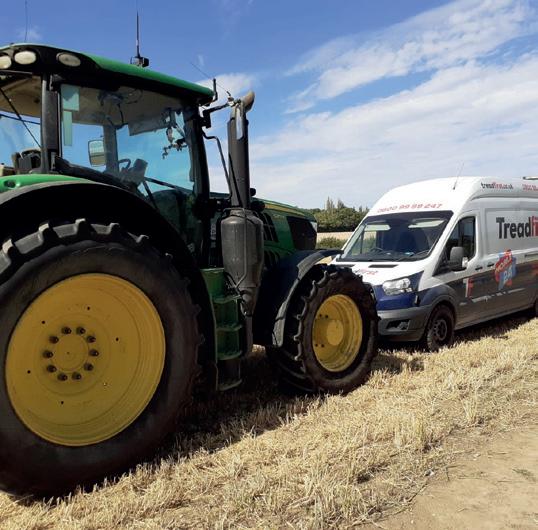










were balanced for energy, protein, amino acids, vitamins and minerals. Omegapro provides feed compounders and home mixers with an economical alternative to fishmeal that is consistent in quality and without adverse effect on pigs and poultry. It can be incorporated into feed at a rate of up to 10%.







Poultry producers are being advised to take care when including new season grain in broiler diets – because doing so can impact feed conversion and performance.
The variable metabolizable energy content of freshly harvested grain can have a detrimental effect on poultry production, says Elanco technical consultant Alex Sly (below). This means it should be introduced carefully into diets.
The visits chunks of undigested wheat in the litter and other signs suggesting birds were struggling to adapt.
Grain matures over three to four months in storage – with moisture-dependent biochemical and enzymic changes removing some antinutritive properties. “This can help improves feed conversion rate and dry matter digestibility.”



The viscous properties of non-starch polysaccharides in fresh grain can slow the passage of feed through the gut and create a favourable environment for harmful bacteria to grow. “Feeding newly harvested grain can be problematic.”




Undigested wheat

Ms Sly says improvements in digestibility have significant implications on the timing of grain usage in animal feeds. Understanding this can help to optimise feed strategies and improve animal health and welfare.










Such challenges were noted during the 2023 season while conducting on-farm visits through Elanco's Health Tracking System.






“Careful management of raw materials leading up to harvest and even blending of new season crops with older grain is an option but isn’t always possible due to raw material availability and limited storage space at facilities.”
to combat anti-nutritional factors and improve nutrient digestibility in diets or to use feed additives to support Intestinal Integrity, says Ms Sly.


A more practical approach is to increase the level of enzymes





“Pre and probiotics can help to maintain a healthy balance of gut bacteria, which can support digestion and nutrient absorption, and help to mitigate any potential negative impacts on gut health from changes in the diet.”


and injecting
Supplied & spread and contract spreading services
Muck sales including poultry
• Up to 7m disc injector
• Dribble bar application
• 18,000-litre capacity Joskin tanker
• Wide low ground pressure flotation tyres and steering axles
• Tank agitator and high volume turbo filler
• Satellite navigation and field mapping
• Low odour operation, a clean and efficient service
• We can supply and deliver slurry, or inject your own
• Supplied & spread and contract spreading services available
• Muck sales including poultry manure and compost
• Muck for straw deals also offered
• Fleet of modern high-capacity spreaders
and efficient service
• We can supply and deliver slurry, or inject your own
• Up to 36m spread width with shredding augers and spreading discs
• Slurry doors and sludge equipment
• Satellite navigation, field mapping and computerised weighing equipment
• Wide flotation-tyres for low ground

Your chance to WIN a pair of Outback Outfitters shorts & Livestock Farmher Headband!
Entering is easy! Just post a photo on Instagram of your tups and make sure to tag @rumenco_ltd & @nettex_agri.
1 2 3 Photo of your tup: You don’t necessarily have to be in the photo but it might give you some extra points if you are...
A Rumenco product must also feature: This doesn’t have to be a new product – an old bucket or empty bag or container will do, as long as we can see what it is!
A Nettex Ram Harness: Your tup doesn’t need to be wearing the harness, it just needs to be visible in the photo


@rumenco_ltd




Make sure that your photo meets the following 3 conditions: @nettex_agri





































Farmers are being offered feefree lending, financial support and resources for agroforestry projects over £25,000.
Lloyds Banking Group says the deal is available through its Clean Growth Financing Initiative (CGFI), which aims to help farmers reduce their environmental impact.
“Integrating trees with crops or livestock can help boost overall farm income and resilience,” said Lloyds agriculture sustainability director Ben Makowiecki.
“Agroforestry can significantly enhance farm productivity through higher land equivalent ratios (LER) compared to single crops, potentially achieving 120-140% productivity.”
“This makes the land work harder, utilising vertical space, while bringing broader benefits, including increased biodiversity, enhanced soil health, improved water management and shade for animals,” said Mr Makowiecki.
Thorough financial planning and projections to demonstrate profitability and debt serviceability are vital for these types of projects, he added.
"We’ll fund agroforestry in the
same way as other sustainable farming projects through CGFI, but it's crucial to have a clear, comprehensive plan,” said Mr Makowiecki.
“This ensures all aspects of the project, from initial costs to long-term maintenance and market considerations, are thoroughly accounted for.”
Tips for farmers considering agroforestry projects include forecasts and budgets up to the time trees start producing commercially viable fruit. Financial planning is important beyond this phase.
“Think about ongoing pruning and maintenance, replacing dead trees, and ensuring a defined market is in place for new produce,” said Mr Makowiecki.
“If you’re growing fruit or nuts for the first time, you may need extra grading or packing and storage equipment. Also, budget for new trees and identify end uses for timber as the agroforestry area expands.”
The Lloyds Banking Group remained committed to offering farmers guidance to help implement more sustainable, profitable farming practices, said
The Woodland Trust’s Trees for Your Farm scheme has provided funding advice to help farmers set up agroforestry systems since 2013.
Funded by Sainsbury's, the trust has helped create over 260 schemes and raised the profile of agroforestry. It also offers up to 100% funding support where appropriate to farms which meet its criteria.
The trust has called on the government to accelerate planting rates by announcing increased investment in this autumn’s spending. It also wants significant improvements in restoration and protection for existing woods and trees.
Agroforestry can maintain or even enhance the farm’s main agricultural output while improving the resilience of the business, says the trust. At the same time, it can help to protect soils, rivers, biodiversity and the climate.
Above: The Woodland Trust wants the government to accelerate planting rates
Trees and shrubs are a critical tool in supporting the farm with changing weather patterns, says the trust. But only 3% of the UK’s farmed area practises agroforestry – less than half the European average.
Systems can be designed to avoid the potential trade-offs that occur in many modern farming systems between food production and public goods, like clean air. “It’s a win-win for farming and the environment,” says the trust.
Mr Makowiecki.
Agroforestry can enhance farm productivity “
To accelerate this transition, the bank had partnered with Soil Association Exchange (SAX) – a farm assessment tool and consultancy service – funding access for existing clients. Using SAX, farmers could assess their current environmental impact and evaluate where to bring in on-farm changes while identifying funding options. This could help open up investment.
Sources could include combining sustainability-linked bank lending alongside schemes such as Sustainable Farming Incentive or the Woodland Trust MoreWoods scheme, sponsored by Lloyds Bank, which covers up to 75% of planting costs.

The UK’s longest established woodland tree cell grower
We
Fruit/ornamental trees
Cell grown
Container grown
Field grown
Guards - Stakes - etc
Planting service available
Nationwide delivery service
Plant Healthy Certification Scheme Accredited
Growers of Quality Trees, Shrubs & Hedging Plants

www.heathwood.co.uk
sales@heathwood.co.uk






Thousands of visitors are set to attend the APF 2024 event this month at Ragley Estate, Warwickshire
More than 300 exhibitors and 25,000 visitors are expected at this month’s APF 2024 event – a one-stop-shop for everything concerning woodlands, trees and timber.
Taking place on 19-21 September, the three-day extravaganza will feature more than £80m of working equipment – much of it designed small woodlands and individual trees – at the Ragley Estate, Warwickshire.
Visitors can get advice on woodland creation, management and the latest grant schemes. Nurseries can assist with species choice, sizes and site suitability. Almost every manufacturer and dealer of woodland and arboricultural machinery are exhibiting.
Exhibition Secretary Ian Millward said: “The show’s reputation for being the place to demonstrate your products and equipment and sell them into the forestry, woodland, arboriculture is a major attraction to exhibitors given they will have a targeted audience."
Events and competitions including the Husqvarna World 25m pole climbing championships, the A.W. Jenkinson and Tilhill European chain-

APF 24 will feature more than
of working machinery
Below: Ian Millward –he place to demonstrate products and equipment
tions of horse logging and the opportunity to have-a-go and try your hand at handling these powerful animals.
A key feature of APF 2024 is the Fencing Village. All of the UK’s top suppliers and manufacturers of materials and equipment will be there demonstrating the latest tools, equipment, machinery and materials including the latest metal clip fencing recently approved for grant schemes.
When you have seen all the equip-
with five previous winners and two of the top four from recent television competition Top Carve. All the carvings will be auctioned off on Saturday from 2pm so come along and treat yourself to a unique sculpture.
Watch the Husqvarna World 25m pole climbing championships, the APF Open tree climbing championships, the UK Lumberjacks competition, the world log to leg pole lathe championships and the British Open fencing championships for both metal Clipex fencing and traditional post and wire fencing.

The traditional woodland crafts area continues to be a very big draw for visitors with the largest variety of crafts on display anywhere in the UK. Clogs to coracles, charcoal to chairs, wheelwrights to basket makers, and rakes to rustic carpentry. If you want to know what a ‘Sussex pimp’ is, this will be the place to find out.
Many of the craftsmen and women will be happy to let you try your hand at a new skill. See every phase of charcoal burning from stacking the kiln to the finished product.
Horse logging is a valuable method of timber extraction on sensitive sites and the British Horse Loggers will be
Getting young people interested and involved with managing, creating and looking after forests, woodland and trees is vital if we are to achieve the UK’s tree planting targets, reduce our reliance on imported timber, and maintain the health of our existing trees and woodlands.
To this end, APF 2024 has teamed up with the Royal Forestry Society (RFS) and Confor to show young people what happens in a modern work ing woodland; everything from seed to sawmill. There is a huge range of career opportunities on offer and a lot more to it than wearing a checked shirt and carrying an axe!
Around 800 school children will attend the event and be given a guided tour of the show by the RFS Learning and Outreach team.
They will see the process of growing a tree from seed, how to plant it, look after it and the
running demonstrations and giving advice on all matters horse logging. You will even have a chance to get be hind the reins and try it for yourself.
APF is keen to get visitors involved and try their hand at a new skill. To this end the Great Big Tree Climbing company will be enabling you to try tree climbing using a rope and harness. Test your head for heights and see if a career in arboriculture is for you. No excuses for not trying as the minimum age is just six years old!
If you have never tried pole climb ing before, come to the arena and have a go at winning the best beginner’s prize. You can also gauge your skill with a chainsaw in complete safety us ing the Husqvarna chainsaw simula tor and see how fast you can cut the branches off a tree.
And if after watching the axemen you fancy a go at axe throwing your self, then you will be able to try it out under supervision of the pros.
Experts from across the forestry sec tor will be sharing their knowledge and views in the Seminar Tent, hosted by Confor (Confederation of Forest Industries UK).
many ways that timber can be utilised from building, furniture, woodchips, firewood and charcoal. They will learn about the environmental benefits of tree planting and about careers as foresters, tree surgeons and engineers, with much of the modern equipment needing advanced computer and hydraulic engineer ing skills.
APF 2024 recognises the importance of teach
Areas of interest
• Arb Worker Zone
• Fencing Village
• Forest Worker Zone
• Woodland Crafts Area
Competitions
• A.W. Jenkinson & Tilhill European
Chainsaw Carving Championships
• British Tree Climbing Competition
• Husqvarna World 25m Pole
Climbing Championships

Topics of discussion range from small woodland management and agroforestry systems to biosecurity and innovations in the industry.
Stuart Goodall, Confor Chief Executive, said: “Once again, the APF team have done a fantastic job in putting together the biggest and best forestry show in the UK. The exhibition
demonstrations are a key part of the event

• Land Workers Alliance
• Lantra
• Royal Forestry Society
• Small Woods Association
Jenkinson
• Euroforest
• Forestry Journal
• Husqvarna
• Tilhill
“The APF occupies a special place in the forestry calendar, bringing together people from every corner of forestry, arboriculture, wood products and biomass. It is a unique and valuable experience for anyone with even a passing interest in what our industry does.”
The Seminar Tent is sponsored by the Forestry Commission and Forest Research.



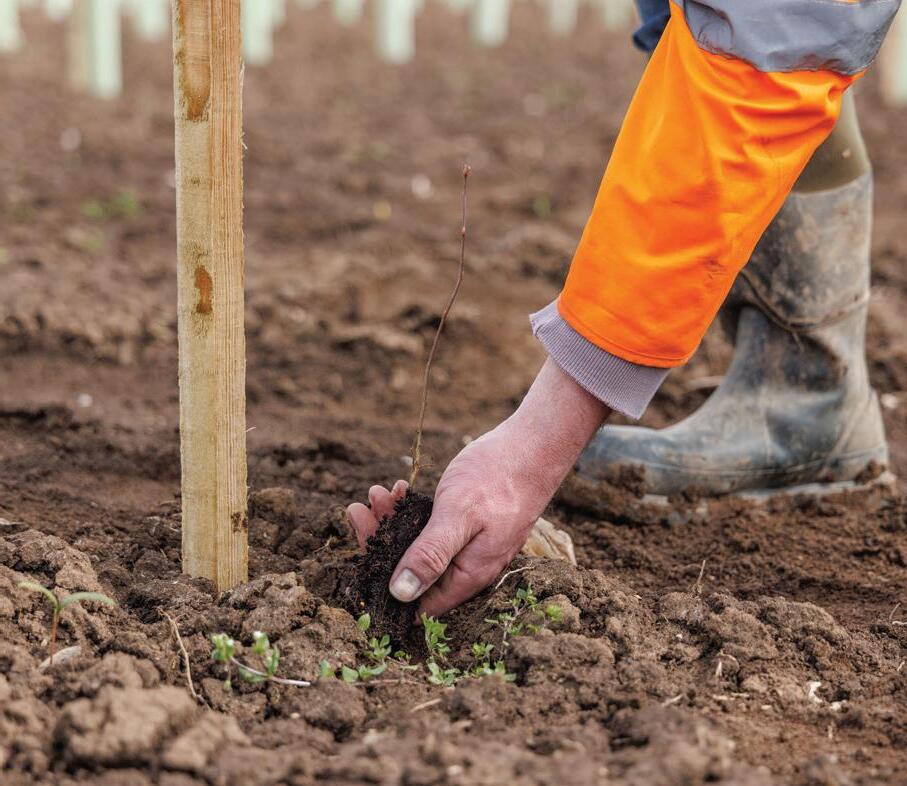














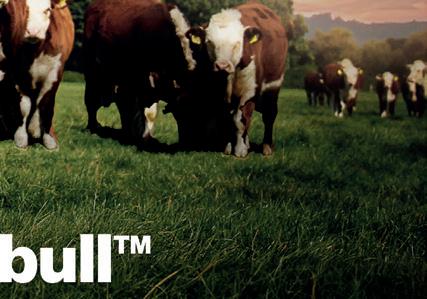









More must be done to support the growing role of artificial intelligence, technology and automation in agriculture, says a survey.
Almost nine out of ten respondents (86%) believe innovation will play a significant role in improving farm management. But it comes with little surprise that finding skilled labour could be hindering progress.
The survey was carried out by the Institute of Agricultural Management (IAgrM) to assess attitudes towards technology and artificial intelligence ahead of the organisation’s annual conference in November.
Some 90% of those surveyed believe automation and AI are major opportunities for agriculture. But labour availability is a challenge, with 89% of respondents saying it affects full-
time workers and 70% saying it affects part-time workers.
Upskilling agricultural labour is a key consideration for the future.
Some 55% of respondents believe technical skills are the most important, with 47% highlighting digital literacy and 37% prioritising health and safety knowledge.
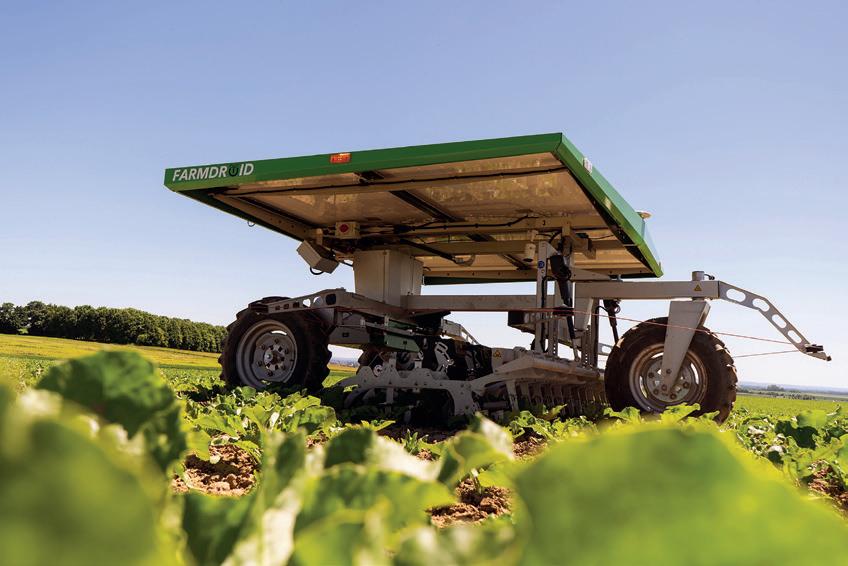
IAgrM director Victoria Bywater said: “It looks like AI is here to stay and we’re starting to see more practical applications reaching farms, whether it’s targeted crop nutrition, precision pesticide application or weather forecasting.
‘True benefits’
“But these findings make it clear we need to support the workforce to realise technology’s true benefits, like increased efficiency and decision-making ability, which will be key themes at this year’s conference.”
£5.25m vineyard and farm offered for sale
A historic 225-acre estate with substantial equestrian facilities and vineyard has been listed for sale on the Suff olk/Essex border.
Dewlands Farm in Higham has a guide price of £5.25m. Located in the Dedham Vale Area of Outstanding Natural Beauty (AONB) between Ipswich and Colchester, it is being jointly marketed by Savills and Strutt and Parker.
At the northern end of the farm is a newly established 12 acre vineyard with 18,450 vines, consisting of 10,000 Chardonnay and 8,450 Pinot Noir grapes. There are also a range of refurbished and converted farm buildings.
Property agent William Hargreaves, of Savills, described the sale as an opportunity for a buyer who wants an amenity farm with additional income streams in an idyllic location.
Innovations like the Farmdroid automated weeder can make fieldwork easier
Due to take place in London on 7 November, the one-day IAgrM conference will feature speakers across the forefront of technology and management. They will include John Shropshire, chairman of the G's Fresh group of companies.
Other speakers include Máximo Torero, chief economist at the UN Food and Agriculture Organisation; and Jack Bobo, the centre lead and director of food systems institute at Nottingham University.
For full conference details, please visit www.iagrm.com






Opportunities for farmers who want to generate revenue from the environment will top the agenda at a major conference this autumn.
The Norfolk Landscapes Conference & Exhibition 2024 will bring together farmers, researchers, policy makers, investors and industry to highlight the importance of natural capital and the direction of land and coastal management.
Key conference themes will include the economics of environmental change, skills and simplifying funding streams – including carbon, biodiversity net gain, and opportunities around landscape-scale nature recovery.
The event is being organised by Norfolk Farming and Wildlife Advisory Group (FWAG), which has partnered with the Royal Norfolk Agricultural Association, Albanwise Environment, Norfolk County Council and Norfolk Wildlife Trust.


high-level keynote speakers.
Norfolk FWAG trustee and executive director Clarke Willis MBE said: “This event is a must-attend for landowners, farmers, nature enthusiasts, policy makers – and anyone passionate about protecting our environment and wildlife.”
Sources of revenue include biodiversity net gain, natural capital, carbon farming and investment from multinational corporations keen to demonstrate their environmental, social and governance (ESG) credentials.
The conference will explore all these opportunities and more – including ways farmers can secure additional environmental revenue streams while ensuring that food production remains at the core of their business.
Above: Good landscape and coastal management are increasingly important
Below: Clarke Willis says the conference is a ‘must-attend event’
food security.”
“We are seeing many more farmers and landowners looking to do both. It is a generational shift in how farms look and feel. It is about good stewardship and doing what is right for the land as well as what is right for the marketplace.”
The transition away from the Basic Payment Scheme has acted as a huge catalyst, says Mr Lyne.
“We are landowners ourselves –with 25% of our income from agri-environment schemes. We are facing the same challenges as farmers.”
Norfolk farmer Glenn Anderson is project lead at the Wendling Beck Exemplar Project (WBEP) – a pioneering habitat creation, nature restoration and regenerative farming project, spanning almost 800ha (2,000 acres) north of Dereham.
The project is a collaboration between private landowners, local authorities, environmental NGOs and Anglian Water. It aims to transform land use for environmental benefit while building community and environmental resilience.

Keynote speakers






Some of Norfolk’s large are already doing this. But so too are smaller family farms. Good production and nature can co-exist comfortably and profitably – including in areas where agriculture is a key part of the rural economy, says experts.


Held at the Royal Norfolk Showground, just outside Norwich, the conference takes place on Wednesday, 2 October. It will include an exhibition, engaging seminars and thought-provoking talks – as well as a host of



“We are keen to demonstrate that good farming and good nature recovery can go hand in hand,” says Eliot Lyne, chief executive of Norfolk Wildlife Trust. “It is not a case of choosing between nature or




Some marginal land is being taken out of production. But food production is continuing – including via regenerative and pasture-based approaches, with livestock used to manage the landscape rather than wholly intensive cereals.
What: Norfolk Landscapes Conference & Exhibition 2024
Where: Norfolk Events Centre, Costessey, Norwich, NR5 0TT
When: Wednesday, 2 October 2024
Tickets: www.bit.ly/fwag2024










martyn@tryac.co.uk















No matter how hard you work, much of farming is sometimes down to sheer luck. From the time of autumn drilling, for example, you can only guess which of your combinable crops will achieve a decent yield at harvest.
Even in a good season, it’s hard to know whether the vast amount of cash we invest in farm inputs is money well spent. Sprayer operators who like to say “it’s a bit thin in the middle” or “the field is full of blackgrass” are no help either.
Last autumn was difficult for all crops. Tough decisions had to be made: whether to drill crops in poor conditions? Or abandon the job until the spring in the hope that sodden soils would be drier?
Some of us are suckers for punishment. Even after deciding to drill in the autumn, we then changed our mind and decided to spray off newly sown crops and redrill in the spring – causing yet more financial pain.
So which decision proved to be most cost effective? It's difficult to be sure.
Probably the decision – although not always through choice – that meant fields were not cropped at all. Instead, they were left fallow for the best part of 12 months, paving the way for a blackgrass-free entry for the autumn 2024 crop of wheat.

I’ve always found it interesting to listen to different farmers and their different views on the financial ups and downs of farming. It has been suggested that a wheat crop yielding 4t/acre on poorer land is always best followed by fallow. Why? Because yields on second wheats and winter barley rarely stack up financially.
One local farm cropped a second cereal with winter barley. Less than ideal seedbeds left him fretting about whether he had done the right thing.
Having sown the crop, he spent the next few months wondering if he should redrill with spring barley
Then, having sold the crop forward –which resulted in a £50/tonne bonus – to his dismay the yield reduction was a worrying 22% down on previous years. An expected 3.7/acre crop yielded just 2.8t/acre.
Last autumn was hard for everyone “
Even with the increased revenue from selling forward, this local grower still believes he lost money due to lower yields.
Having adjusted spending on the barley to accommodate the fall in yield, the big question remains: whether it was right to drill in the autumn? With spring barley around the corner, the answer will soon be apparent.
Then there is the challenge and added expense of putting right soil after a sodden year. With much land still recovering from the deluge of water, compaction has to be reversed and that will require extra cultivation.
A rent reduction to compensate for the added expense is unlikely – especially with land rents in the region of £200/acre and landlords demanding stable incomes for the foreseeable future.
That means focusing on inputs. The drive to make savings means even the combine cutter height is under the microscope. Lower heights mean more straw and a bigger swath can boost the bank balance.
The general consensus – and not just from farmers – suggests that machinery is too expensive and must therefore work harder to earn its keep.
Having said that, one dealer I know says selling kit is not a problem – the big challenge is the aftercare and employing the right people to back-up sales. So too is extracting the money from some farms.
With fewer youngsters coming into the industry there are fewer people about with a good understanding of farm machinery.
That means if the laptop says no, a quick parts replacement can soon incur a costly bill.


It all adds up to a challenging time.And with the new Chancellor expected to announce a raft of cuts in this autumn’s Budget, a variable harvest may be the least of our worries – whether we farm big or small.

















Yard, buildings, small amount of land and modest accommodation for relocation of an agricultural/horticultural business. Anywhere in the UK considered, please contact 07719 995742

















